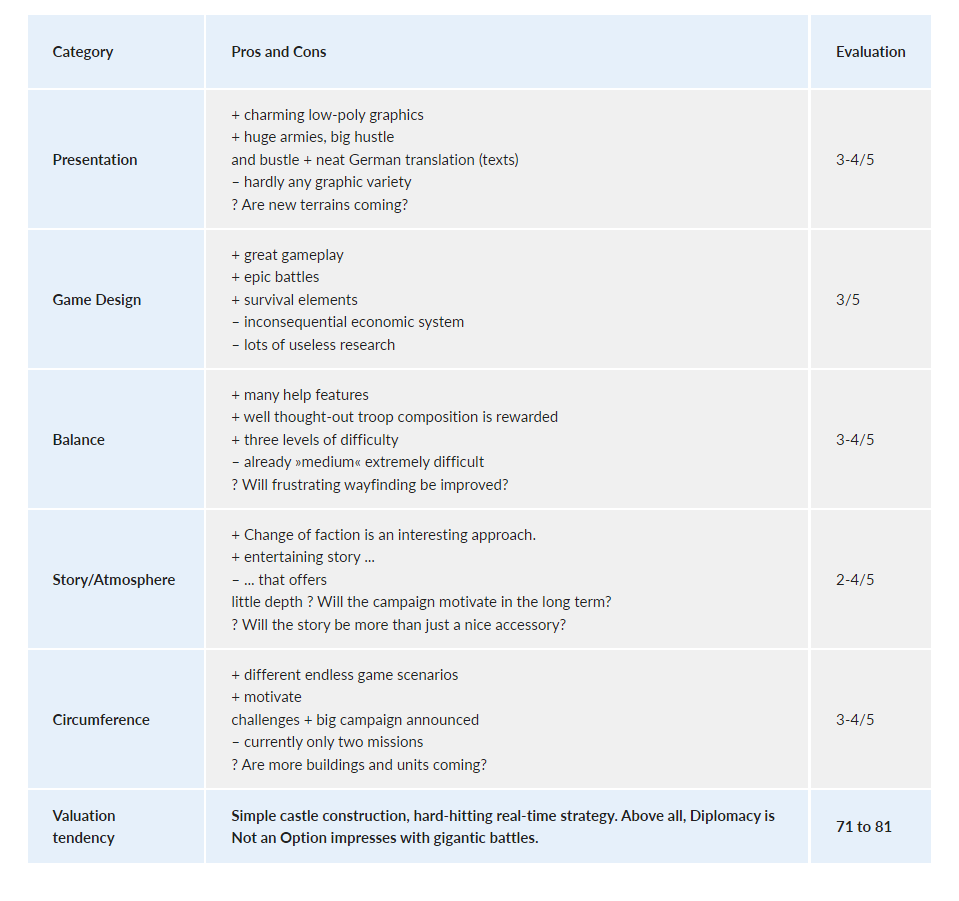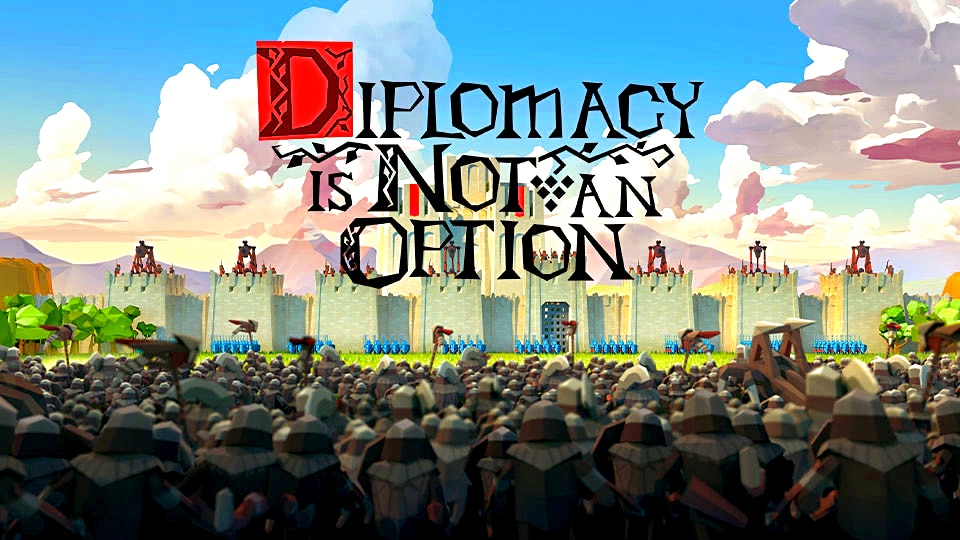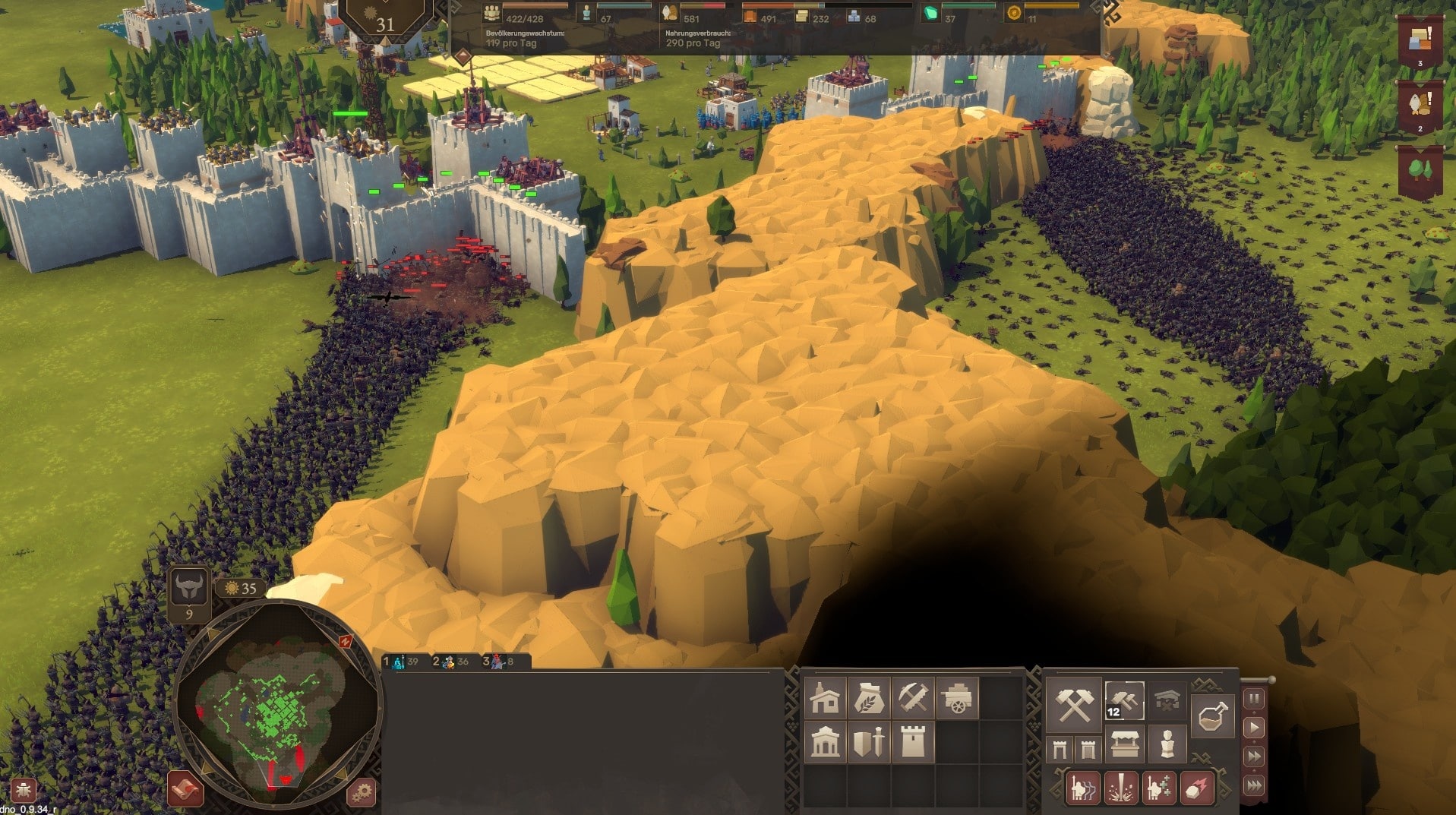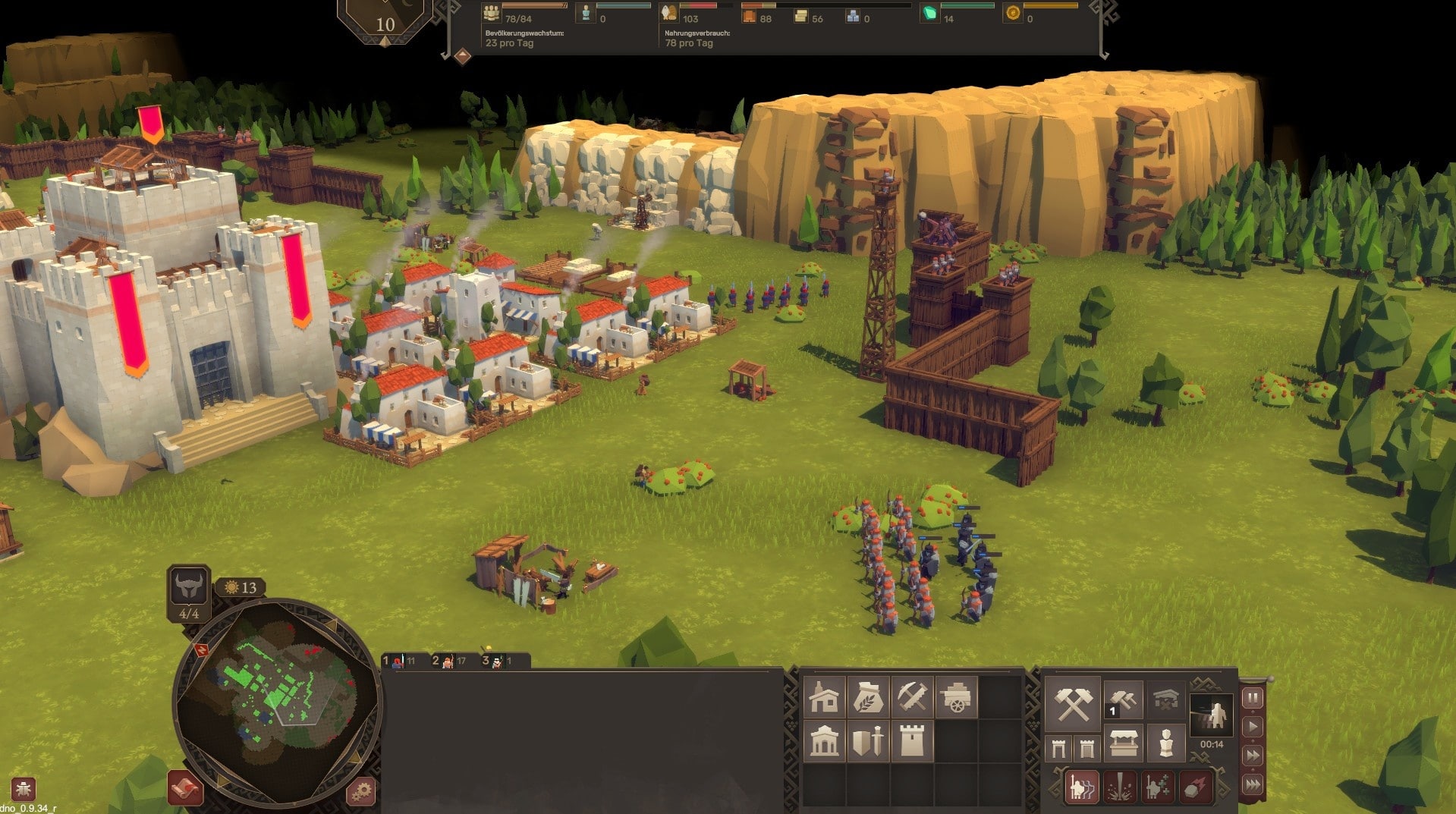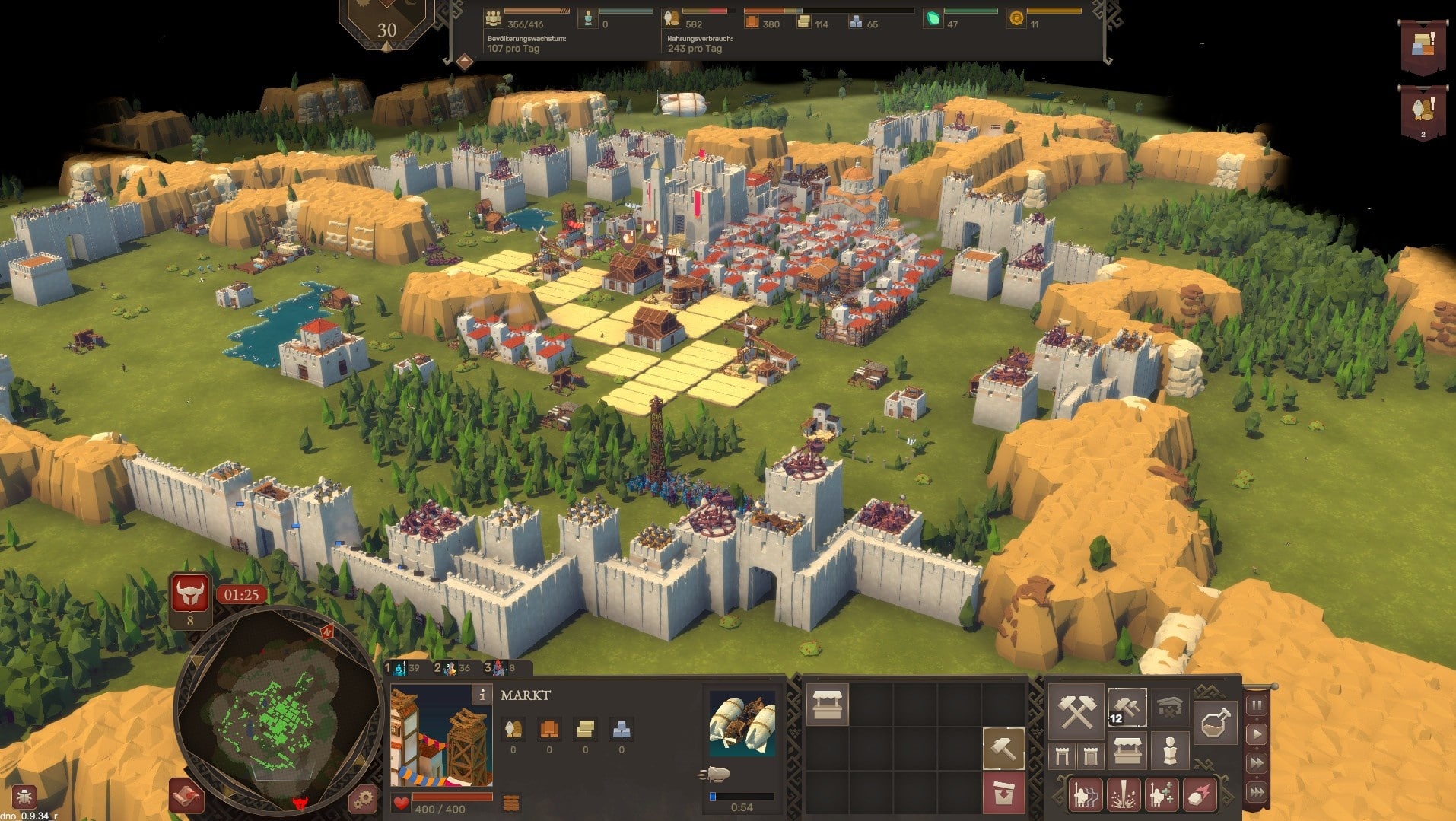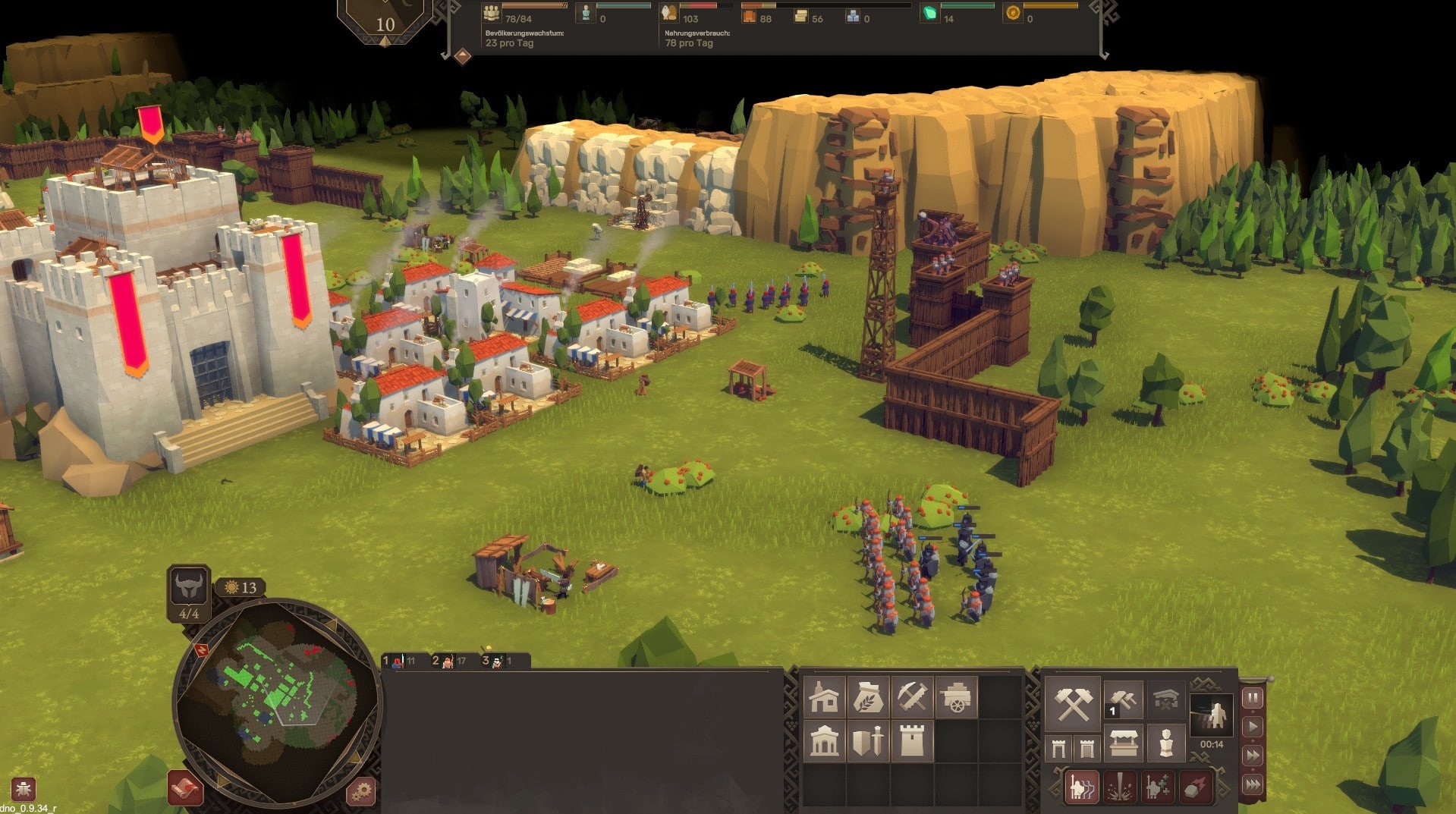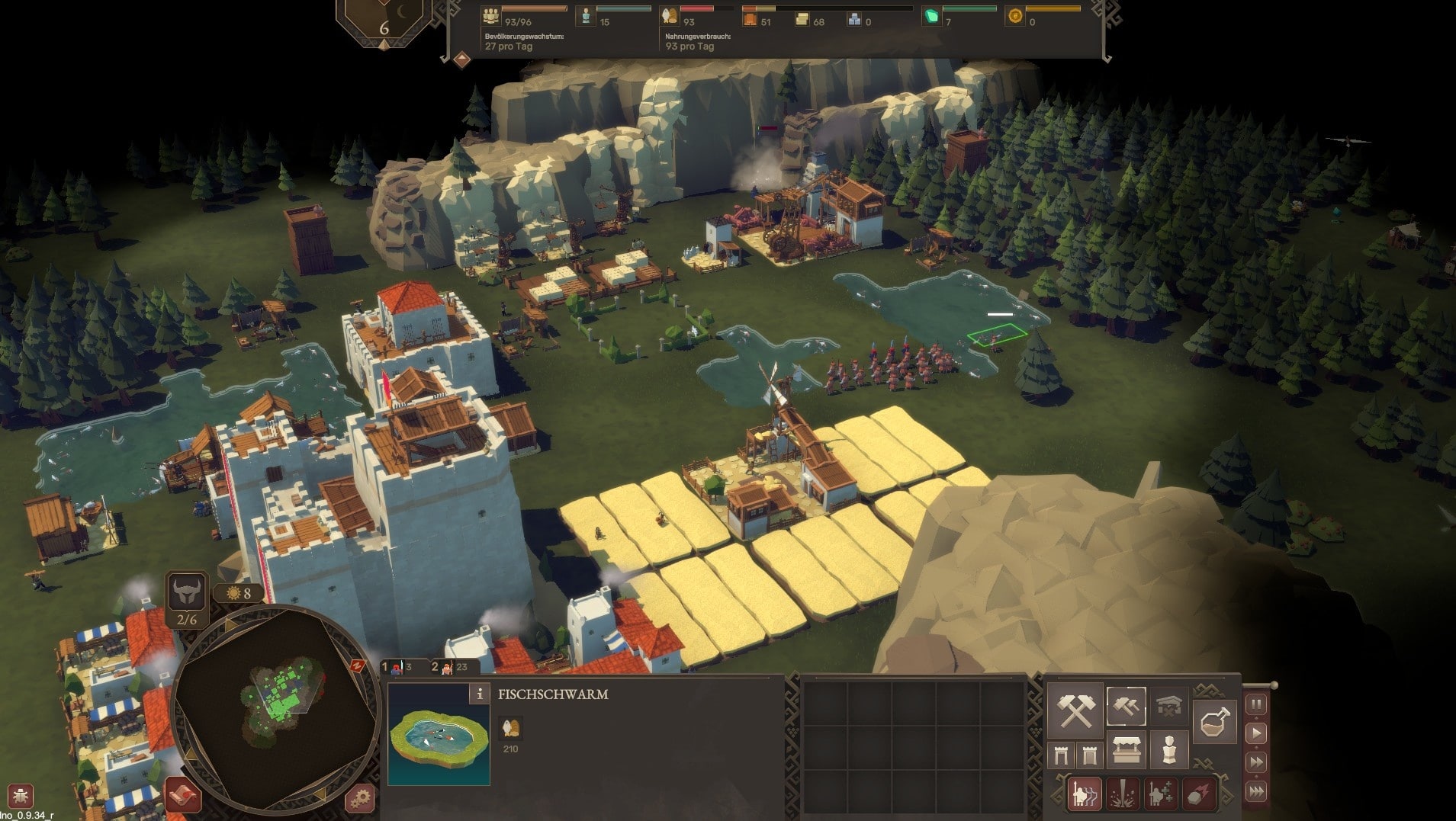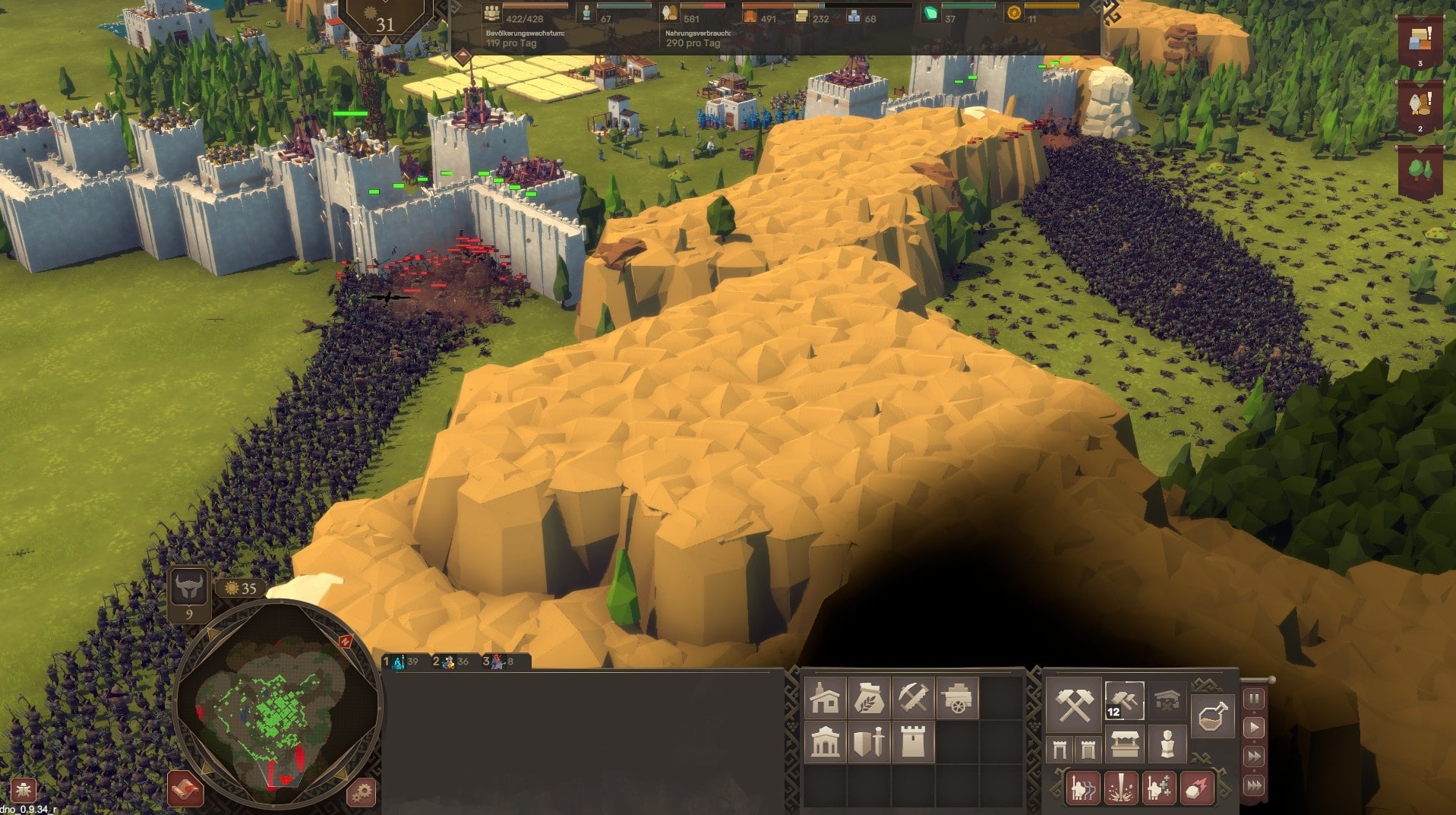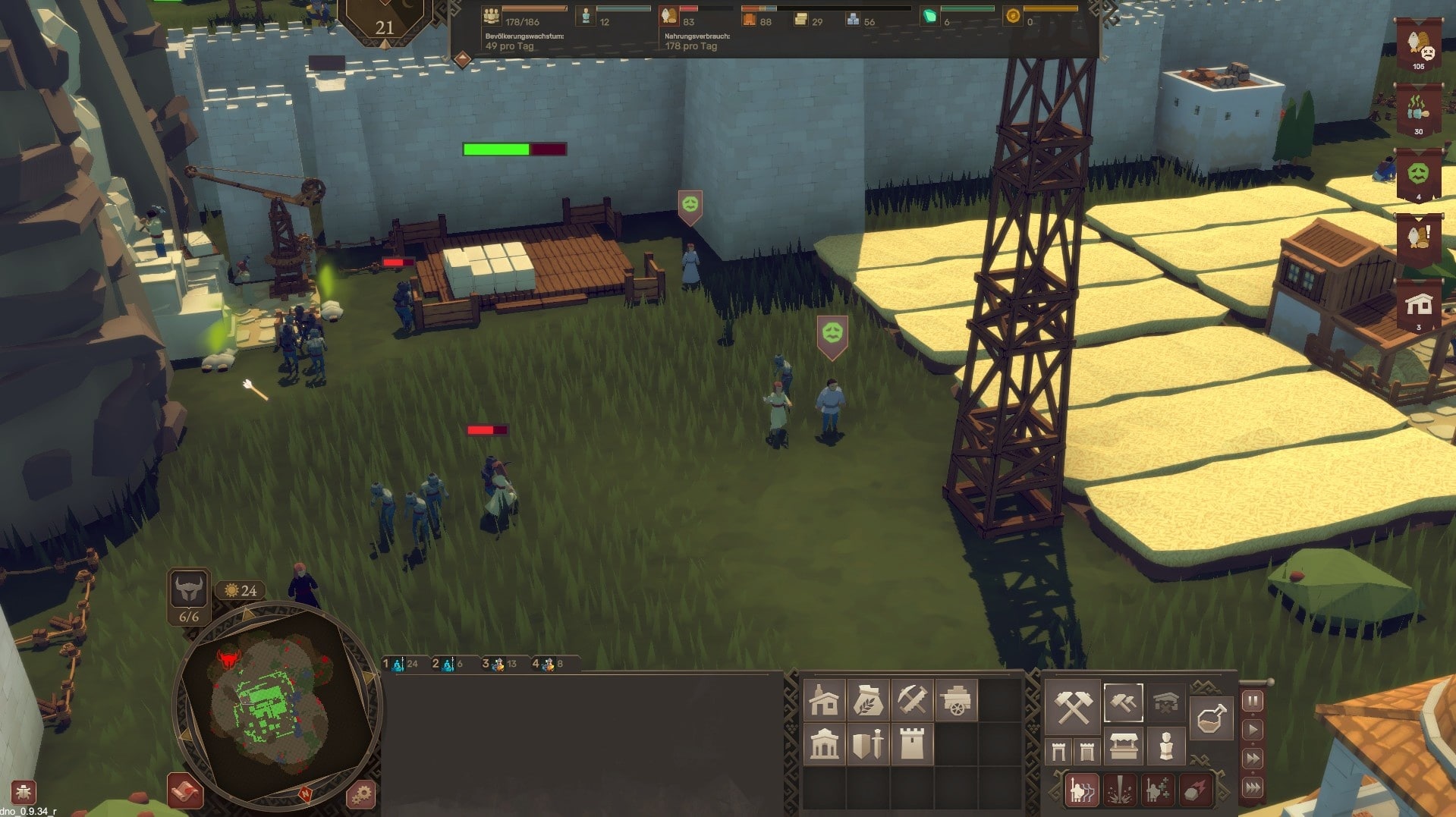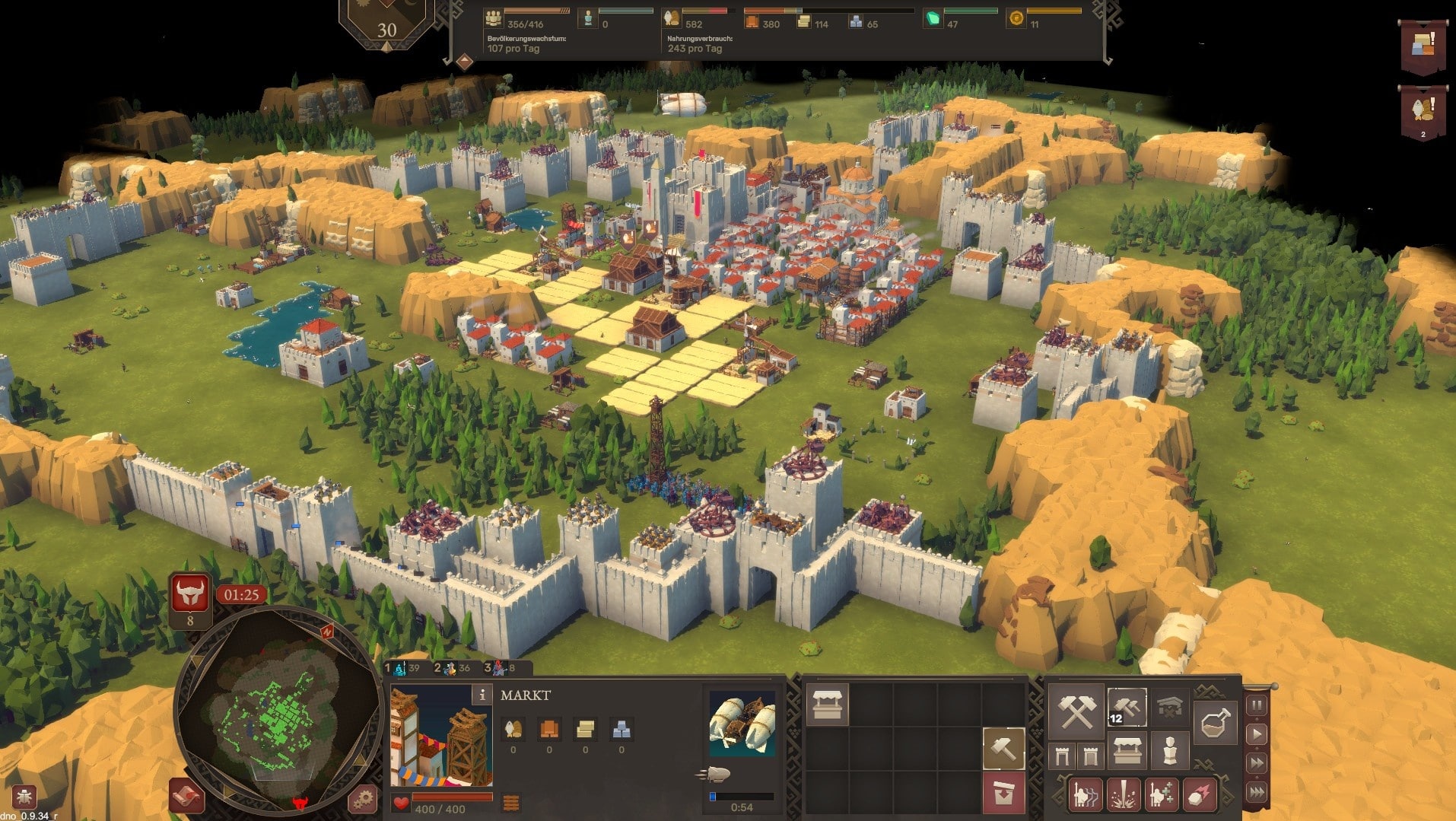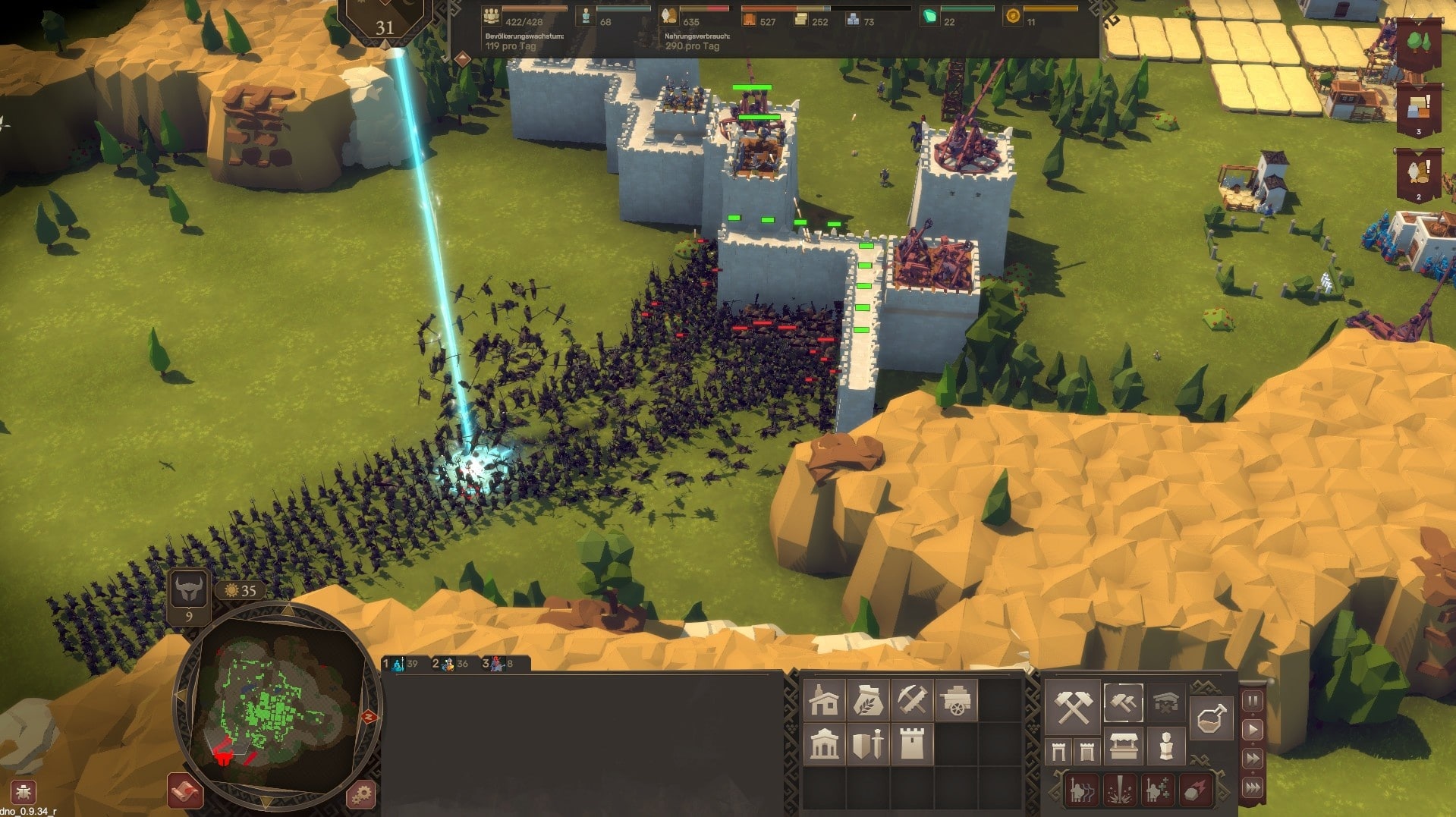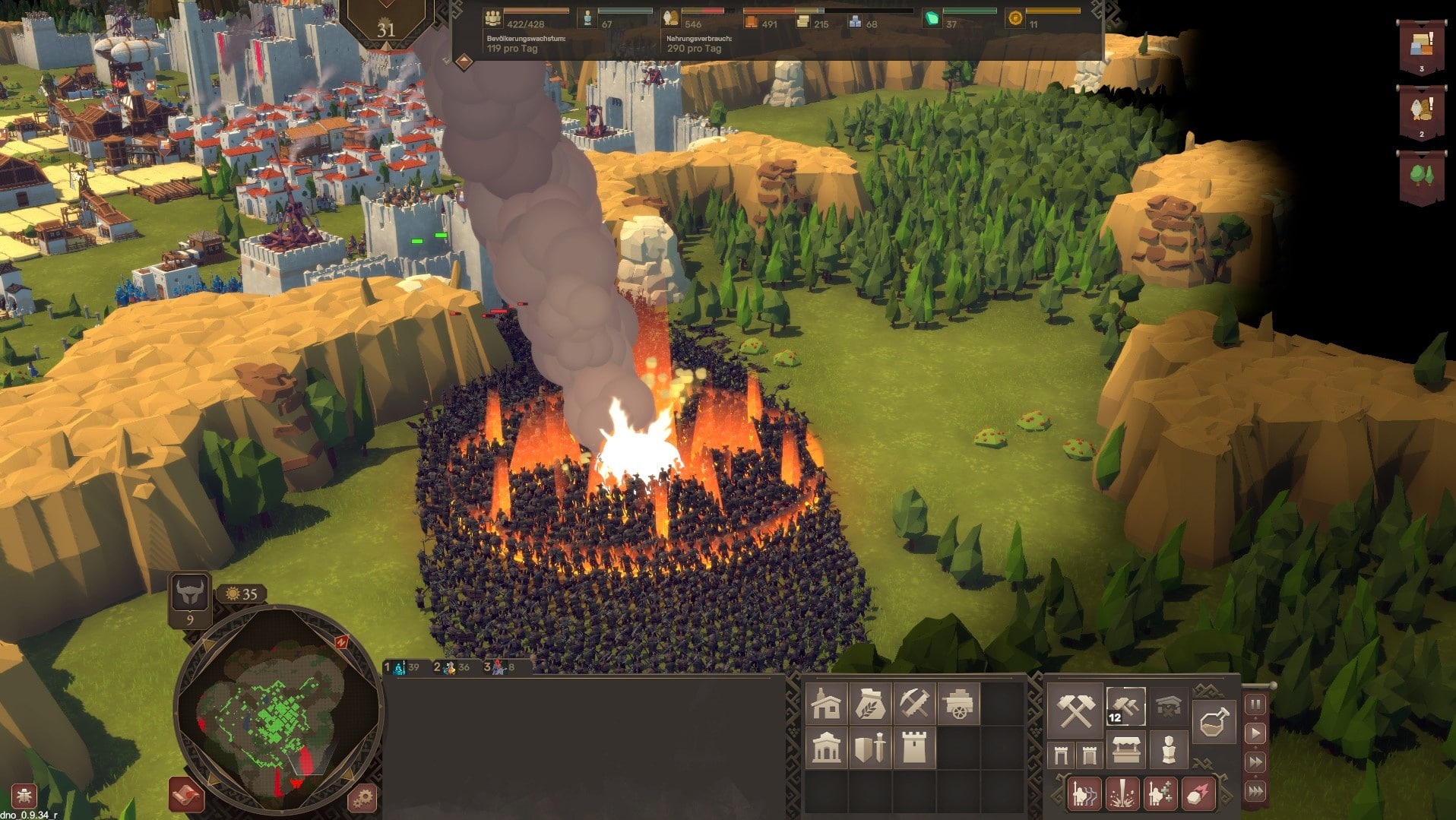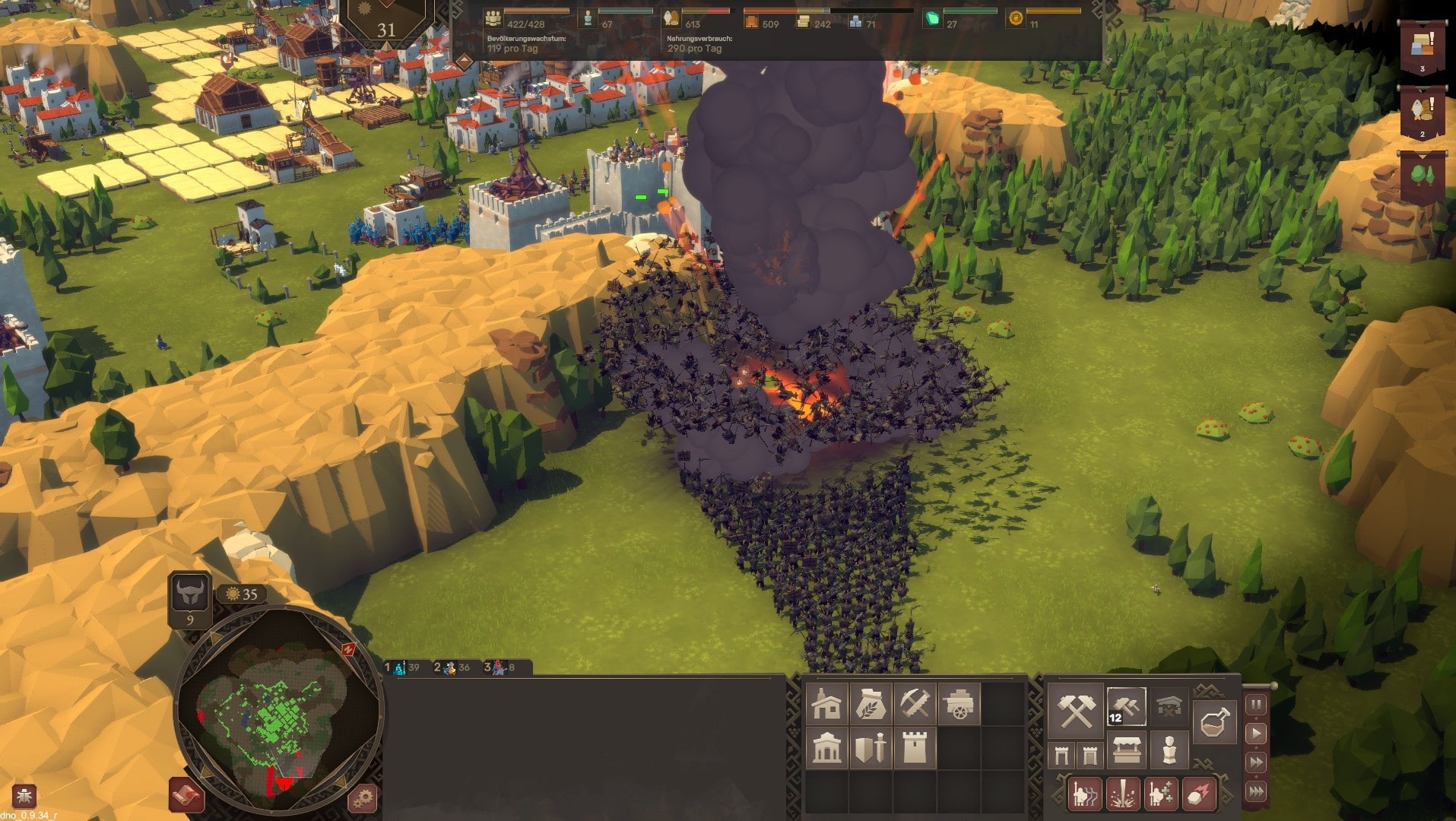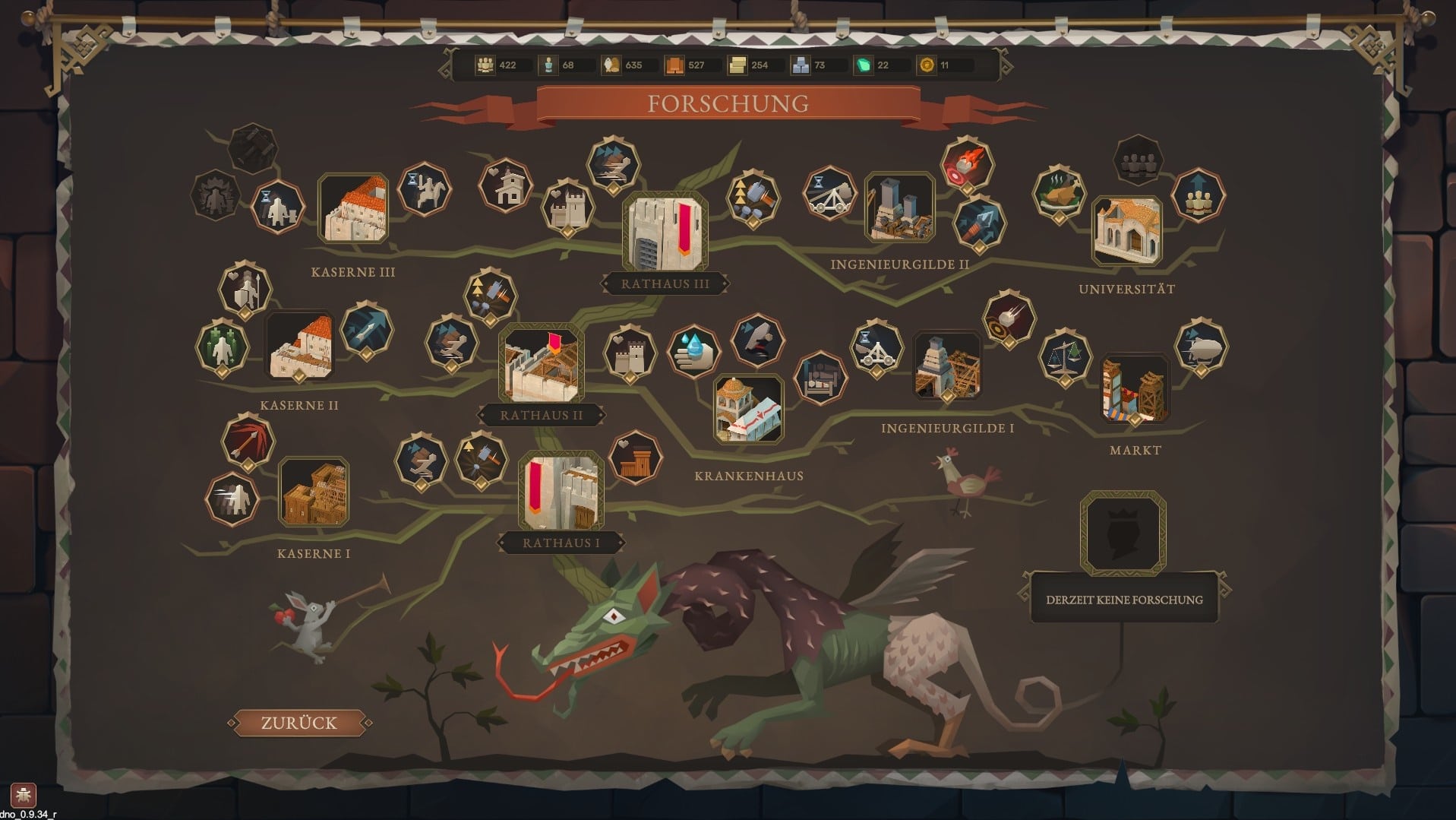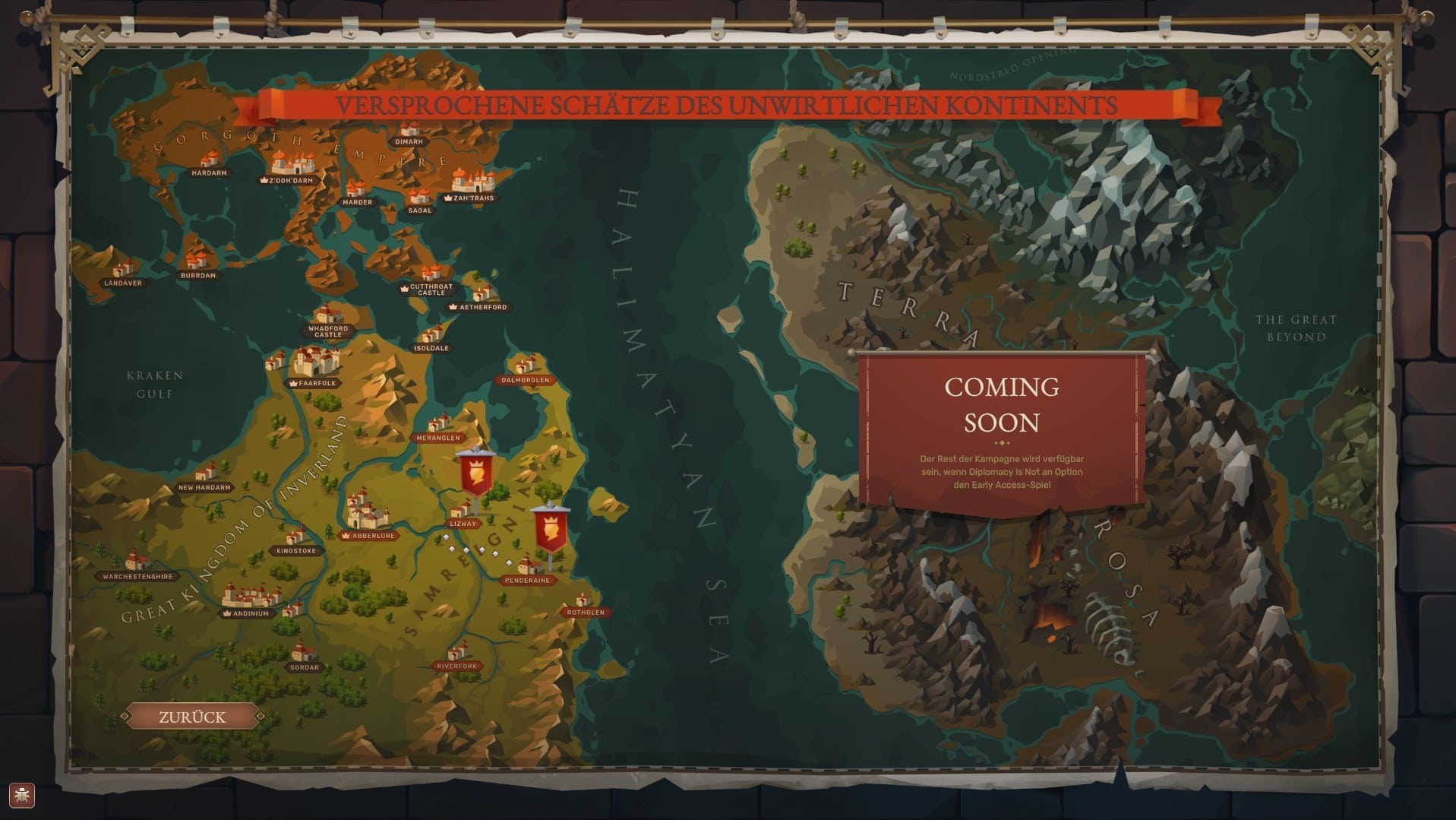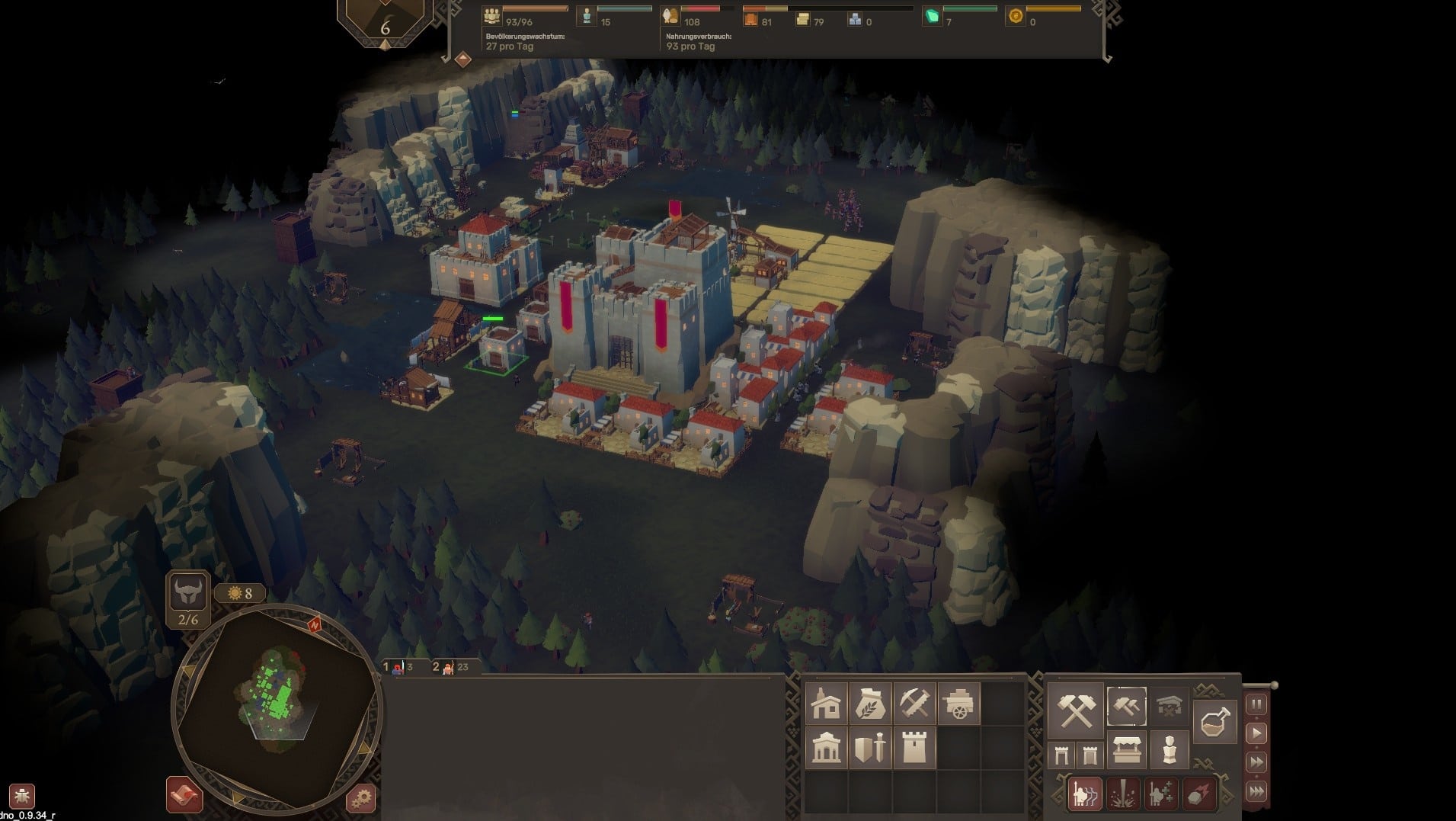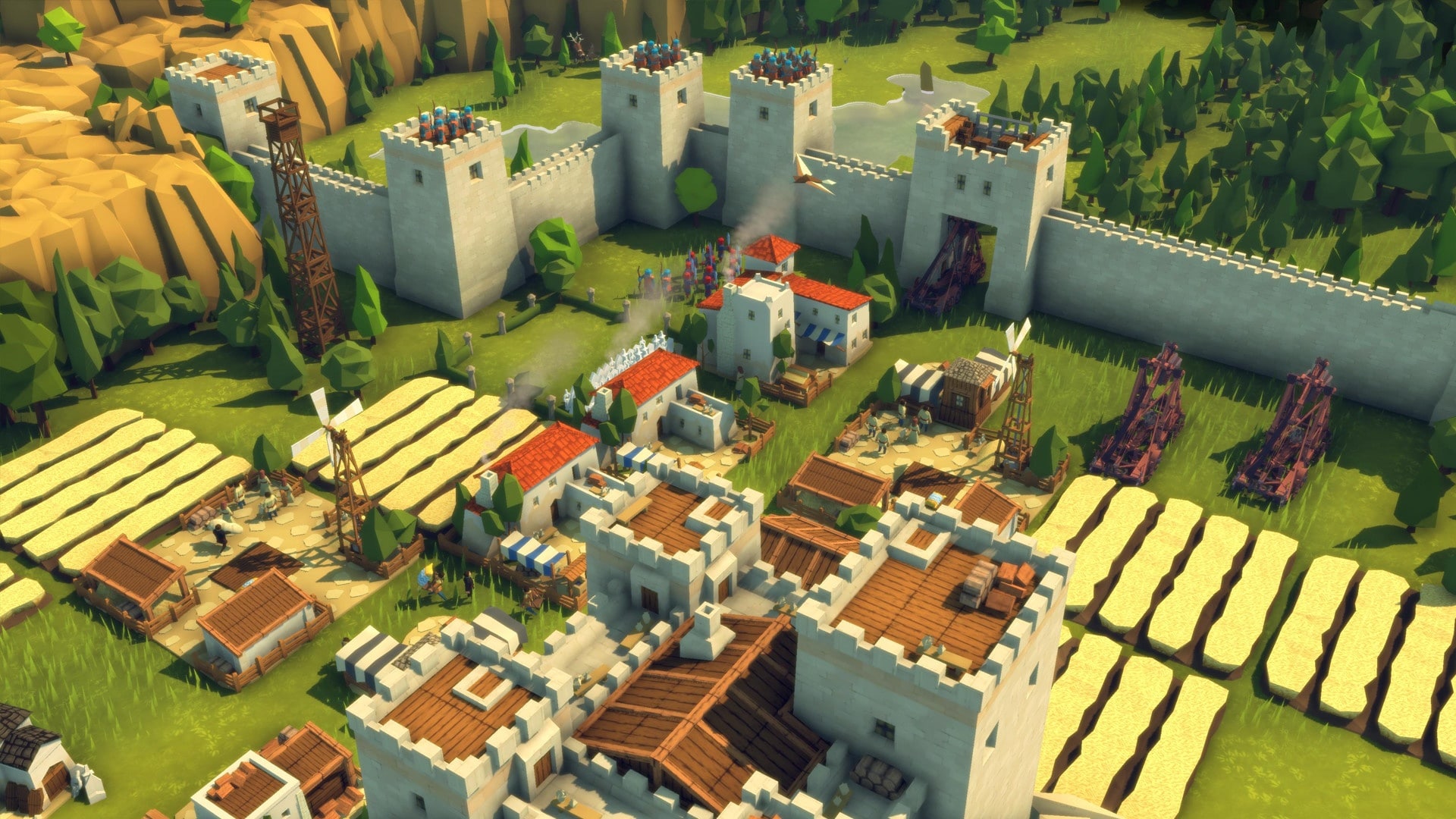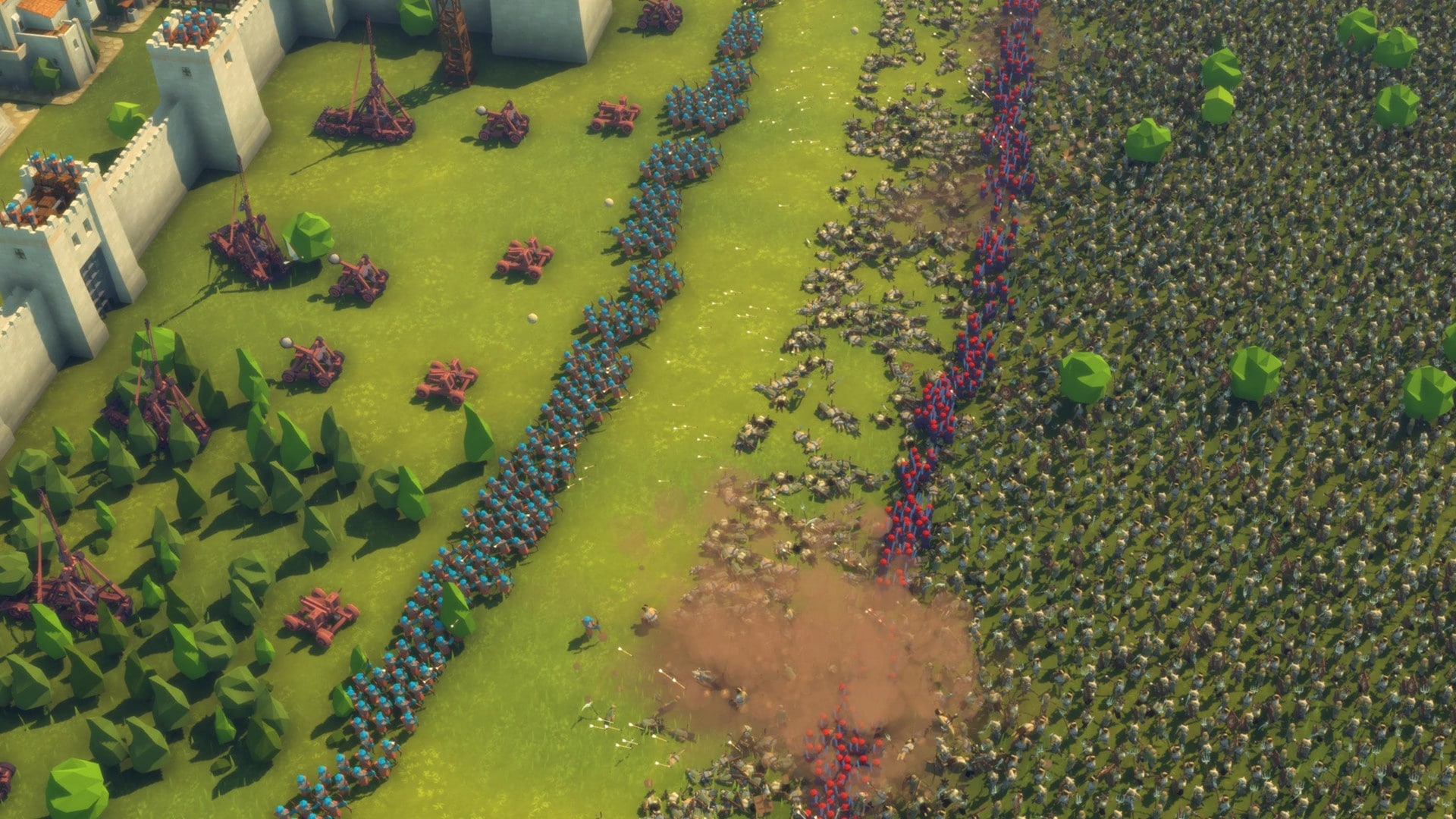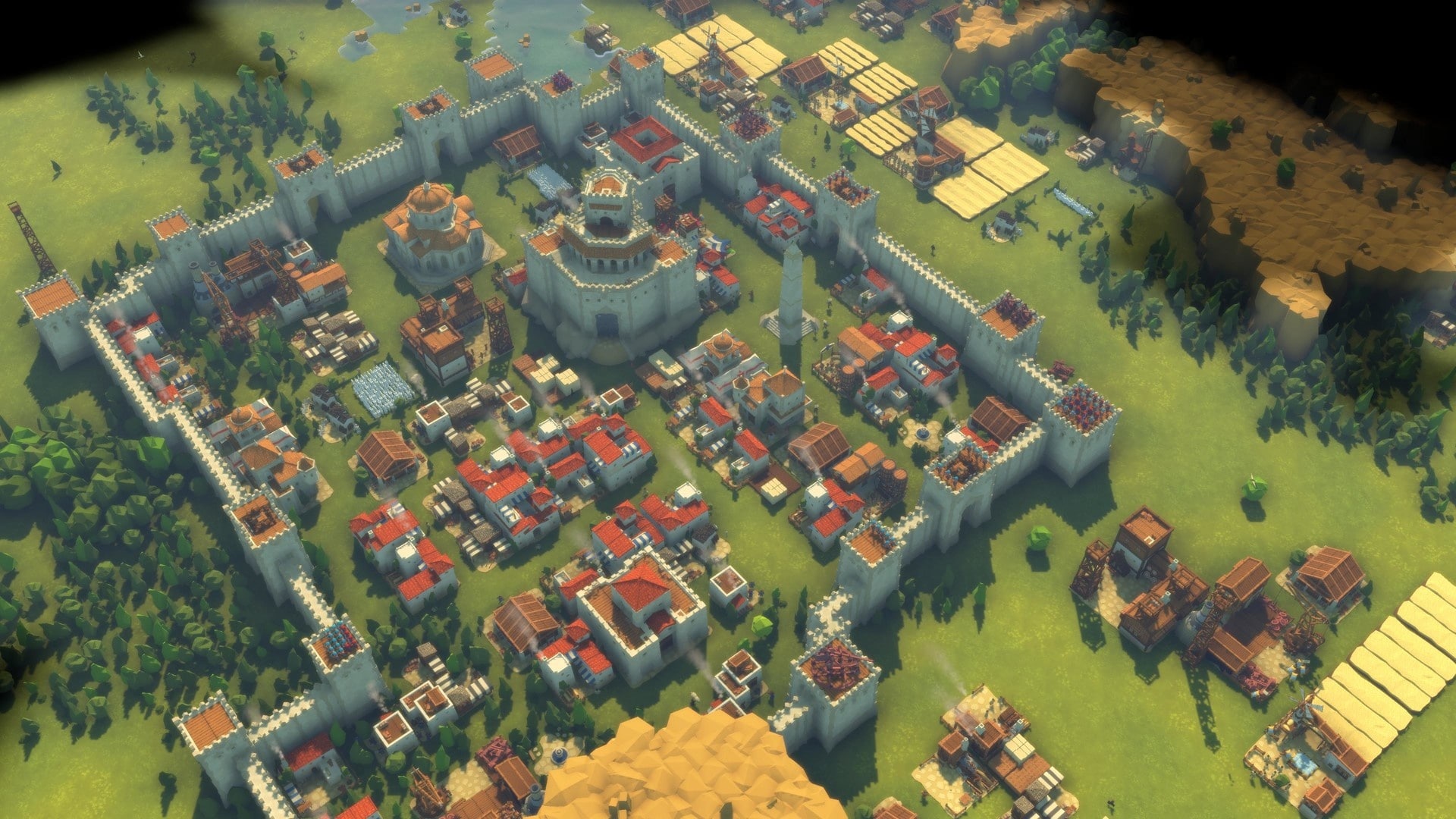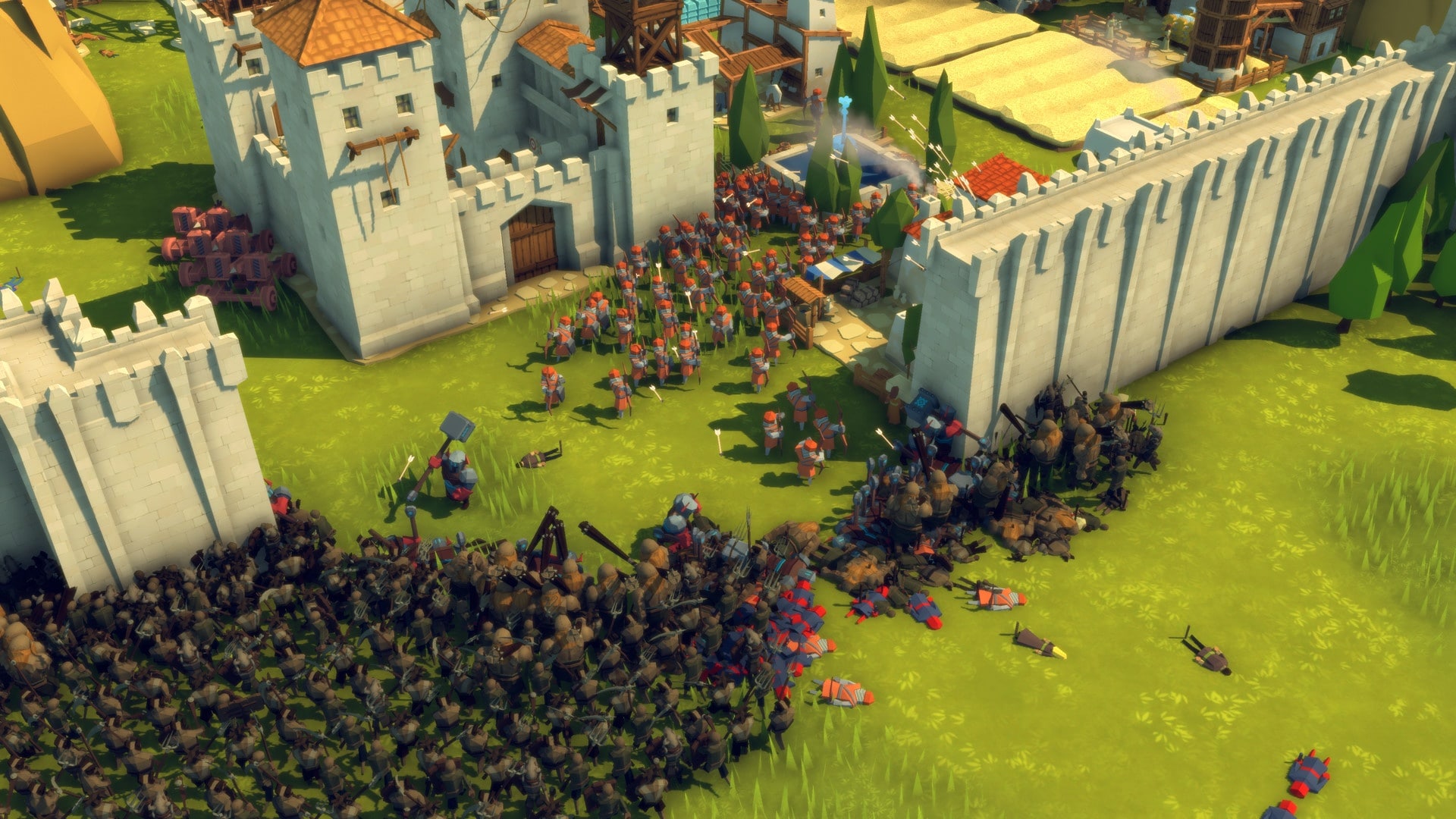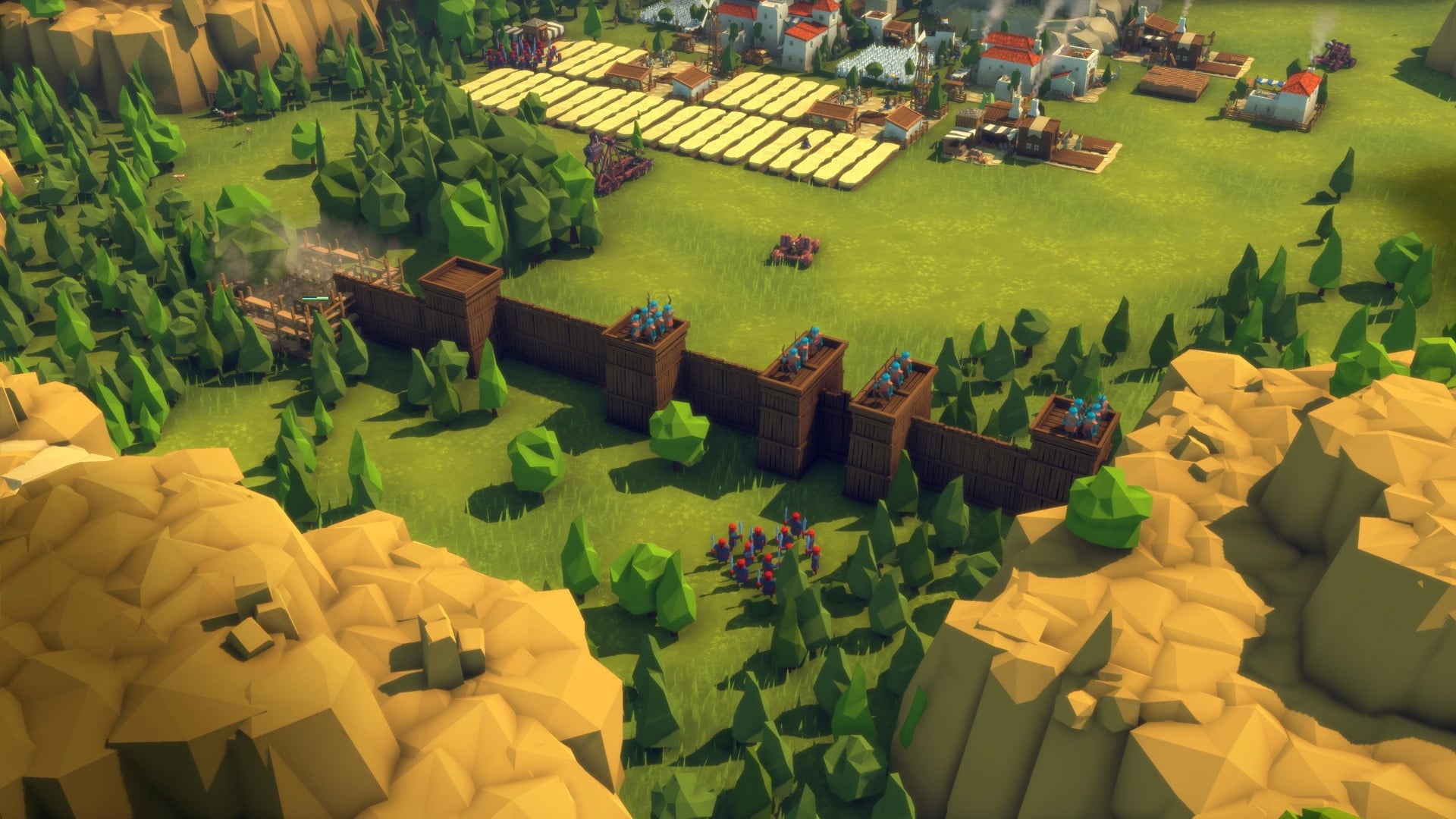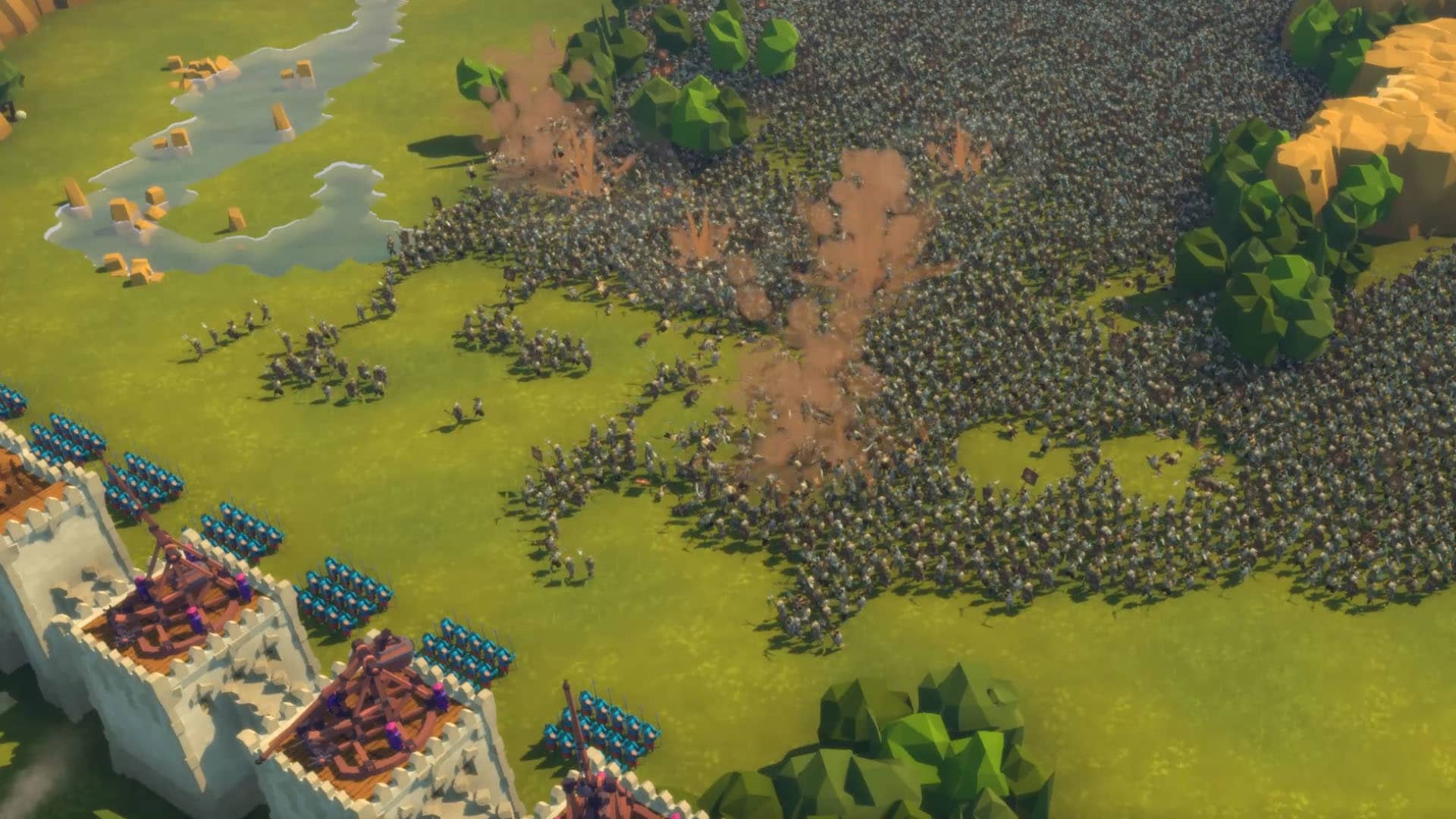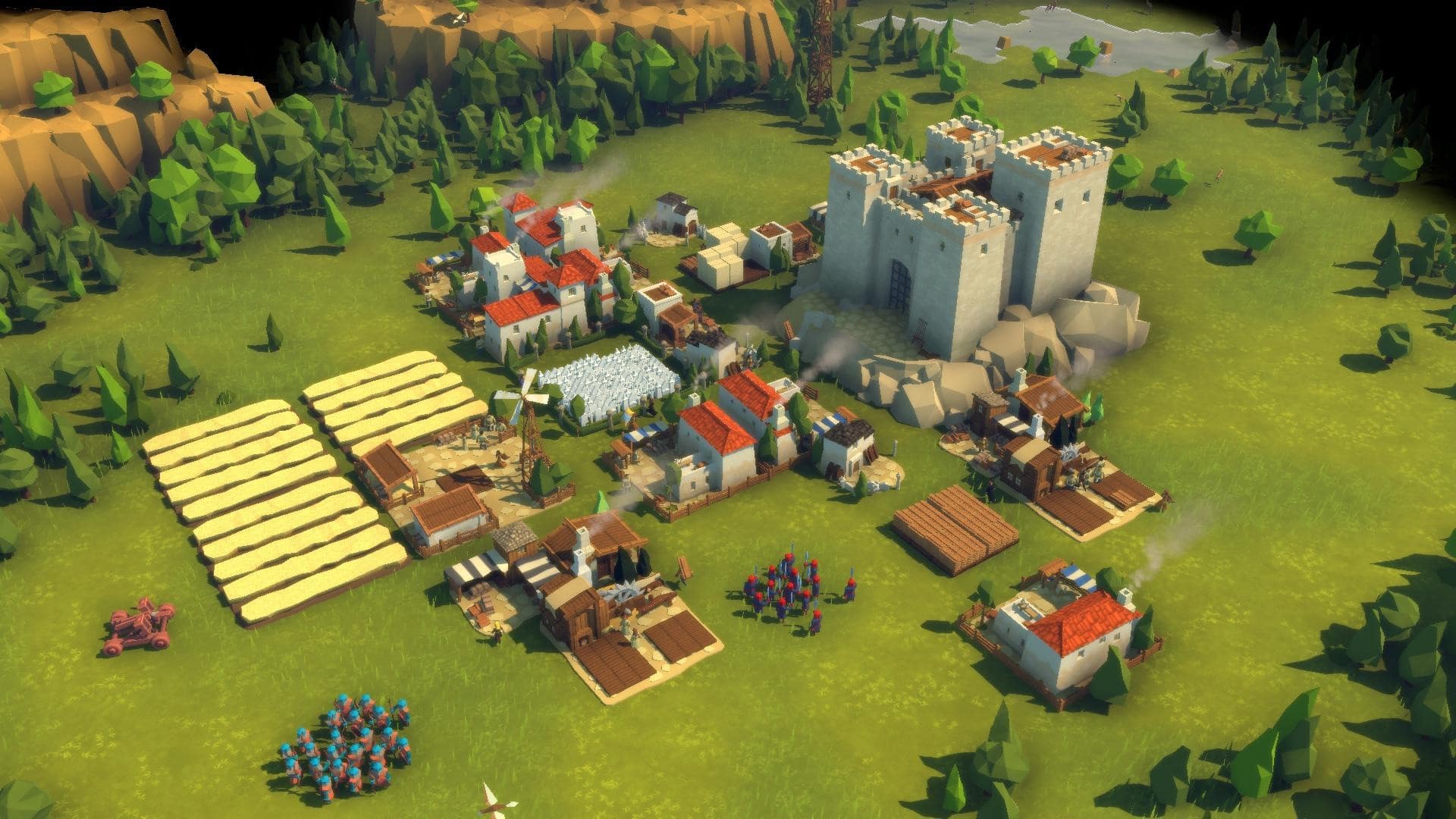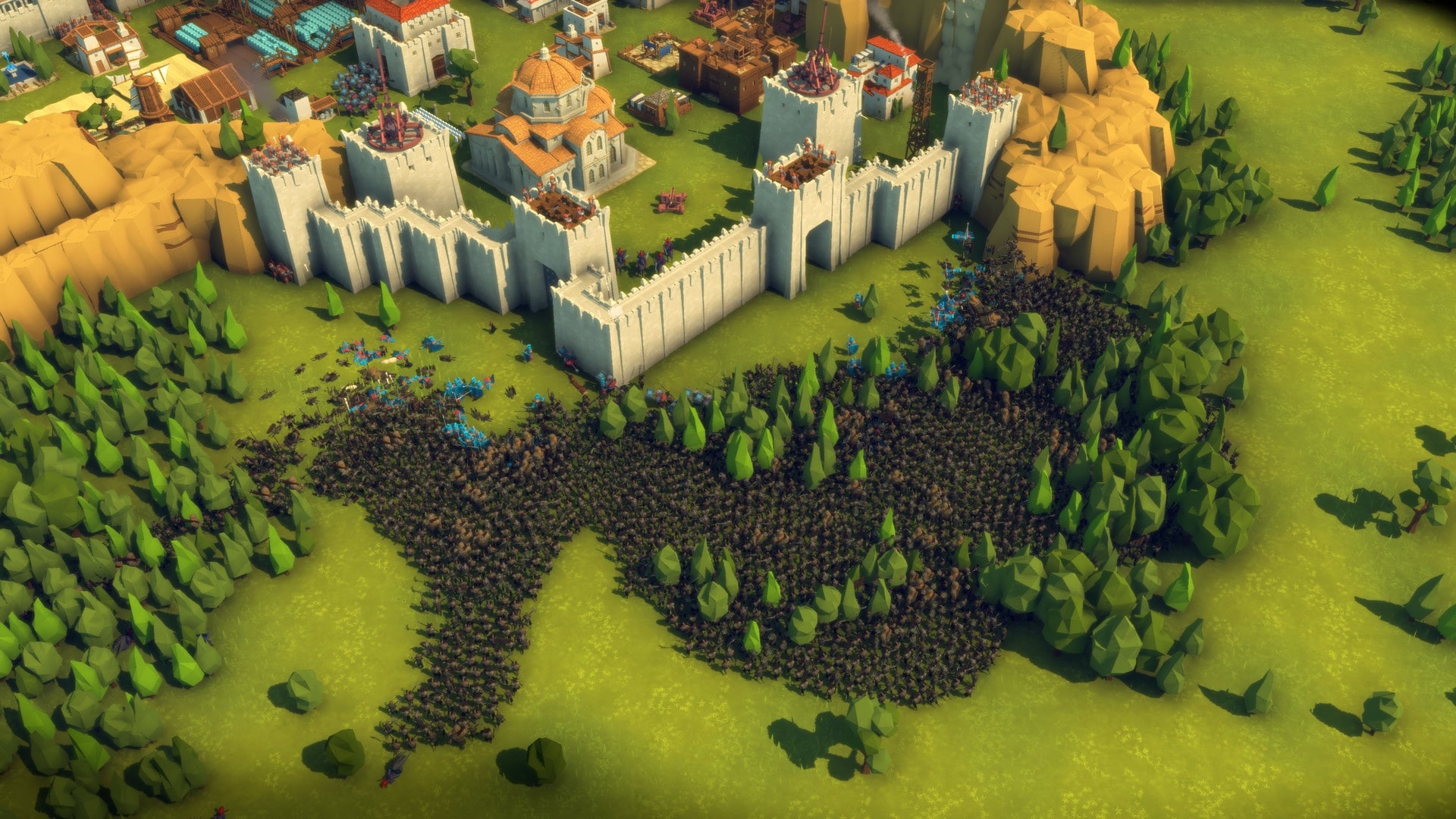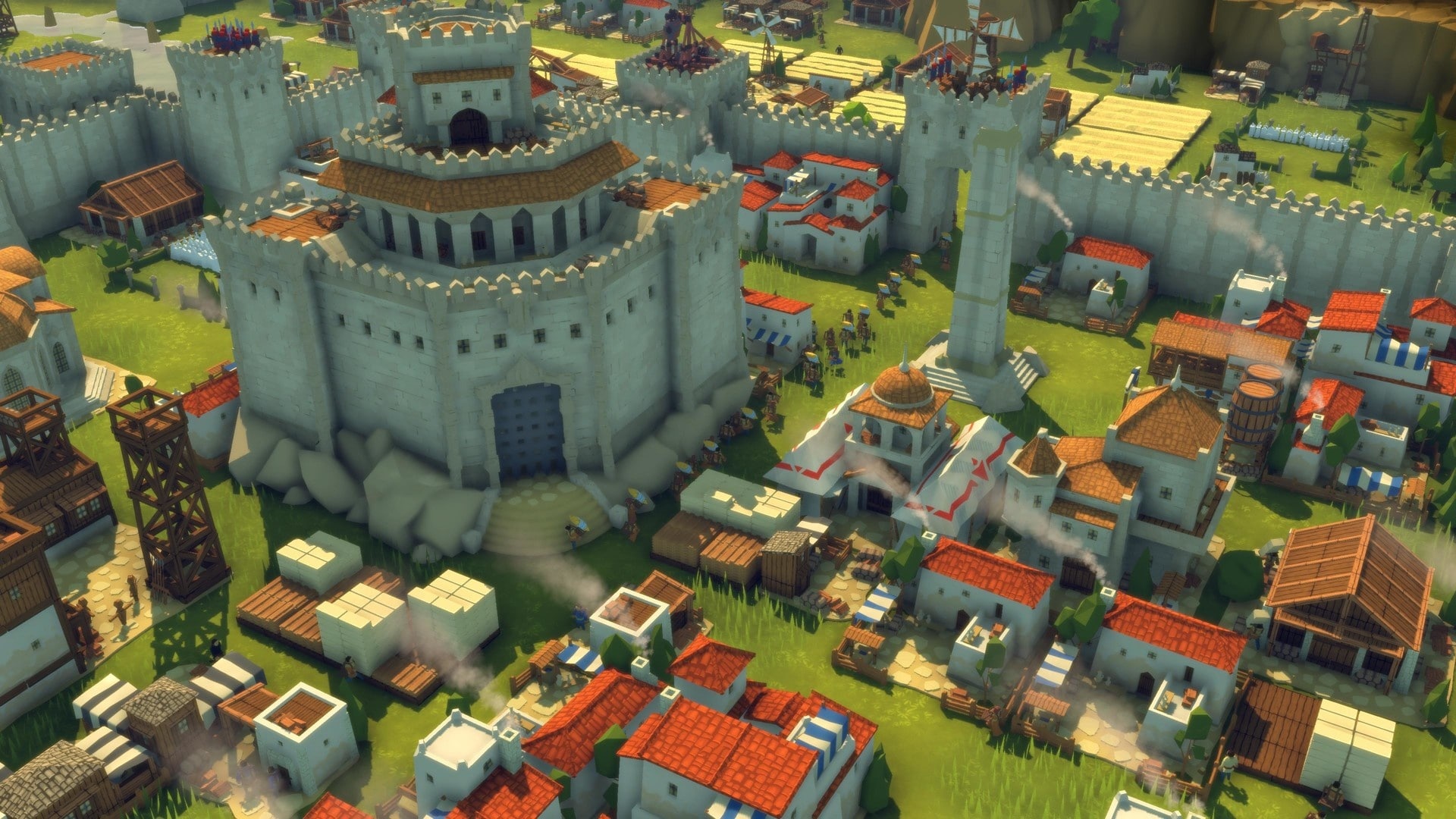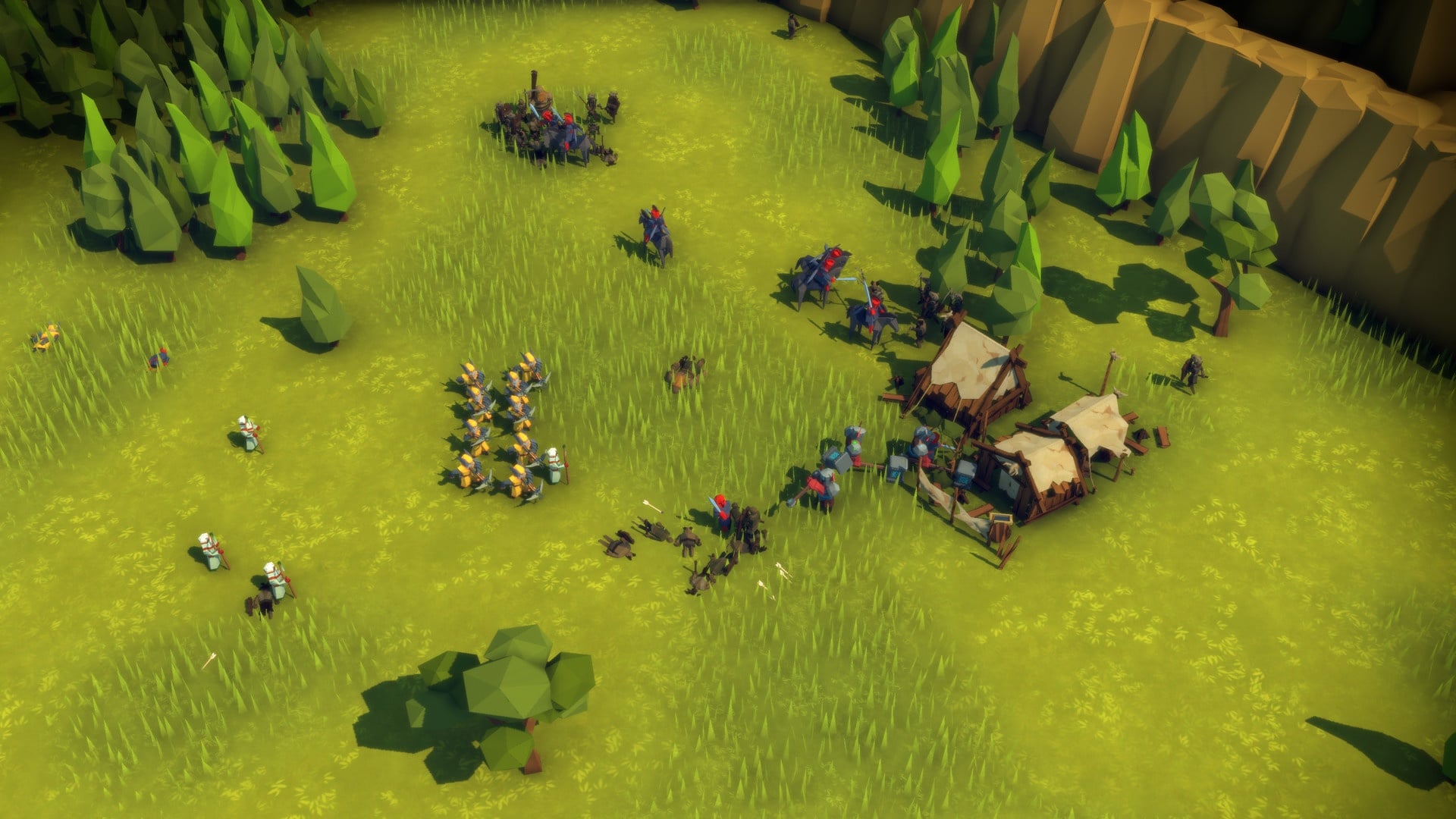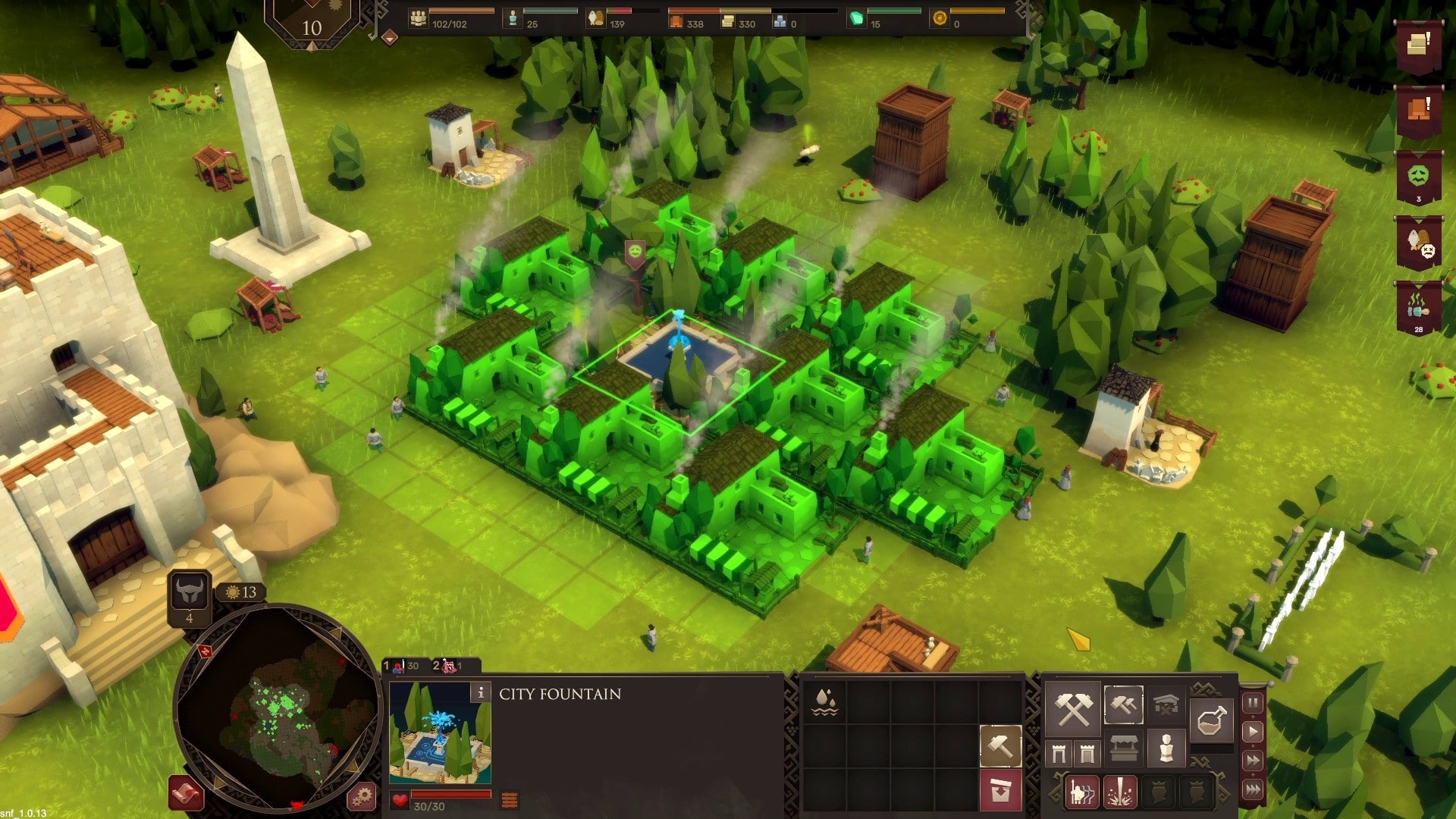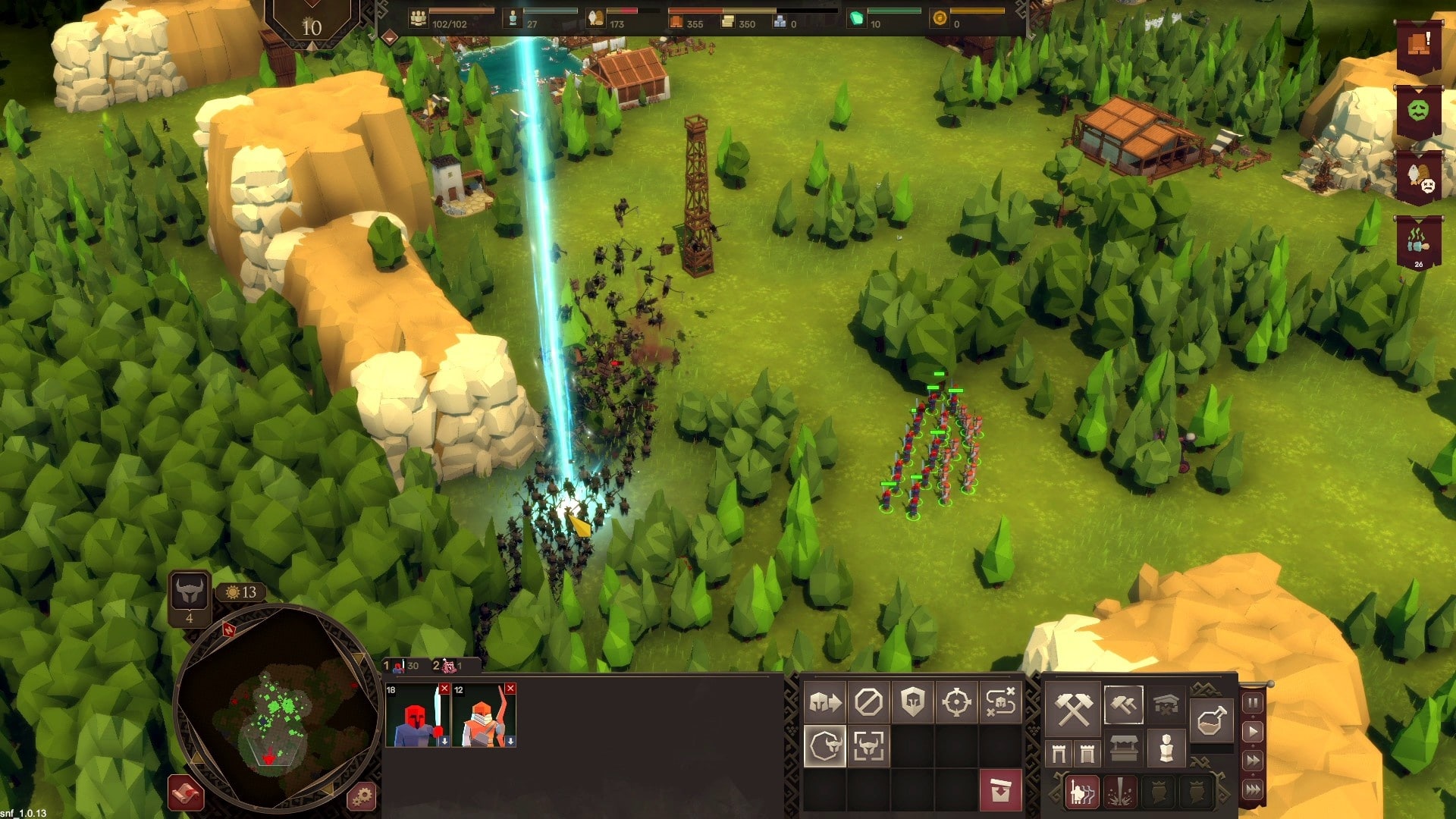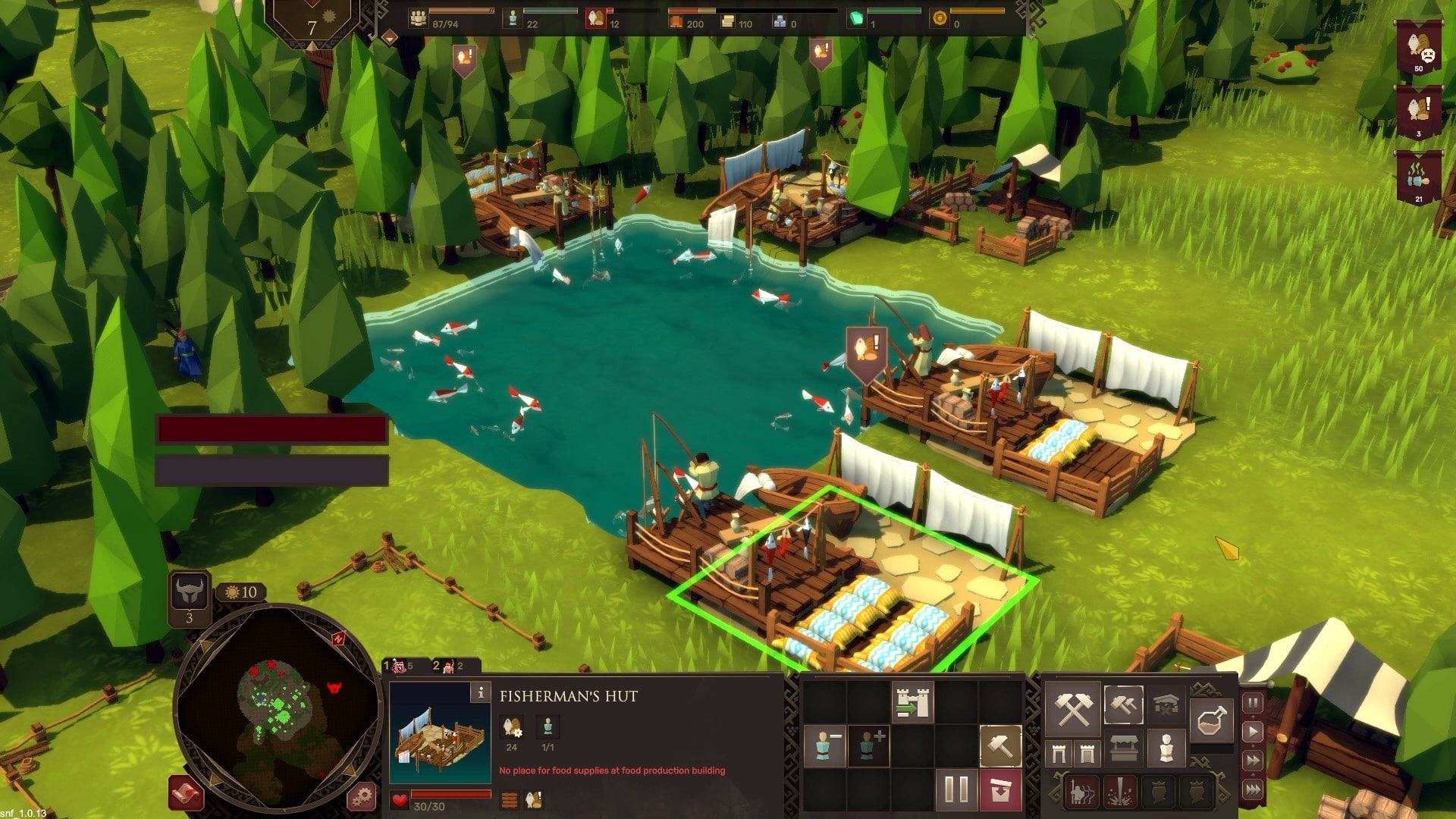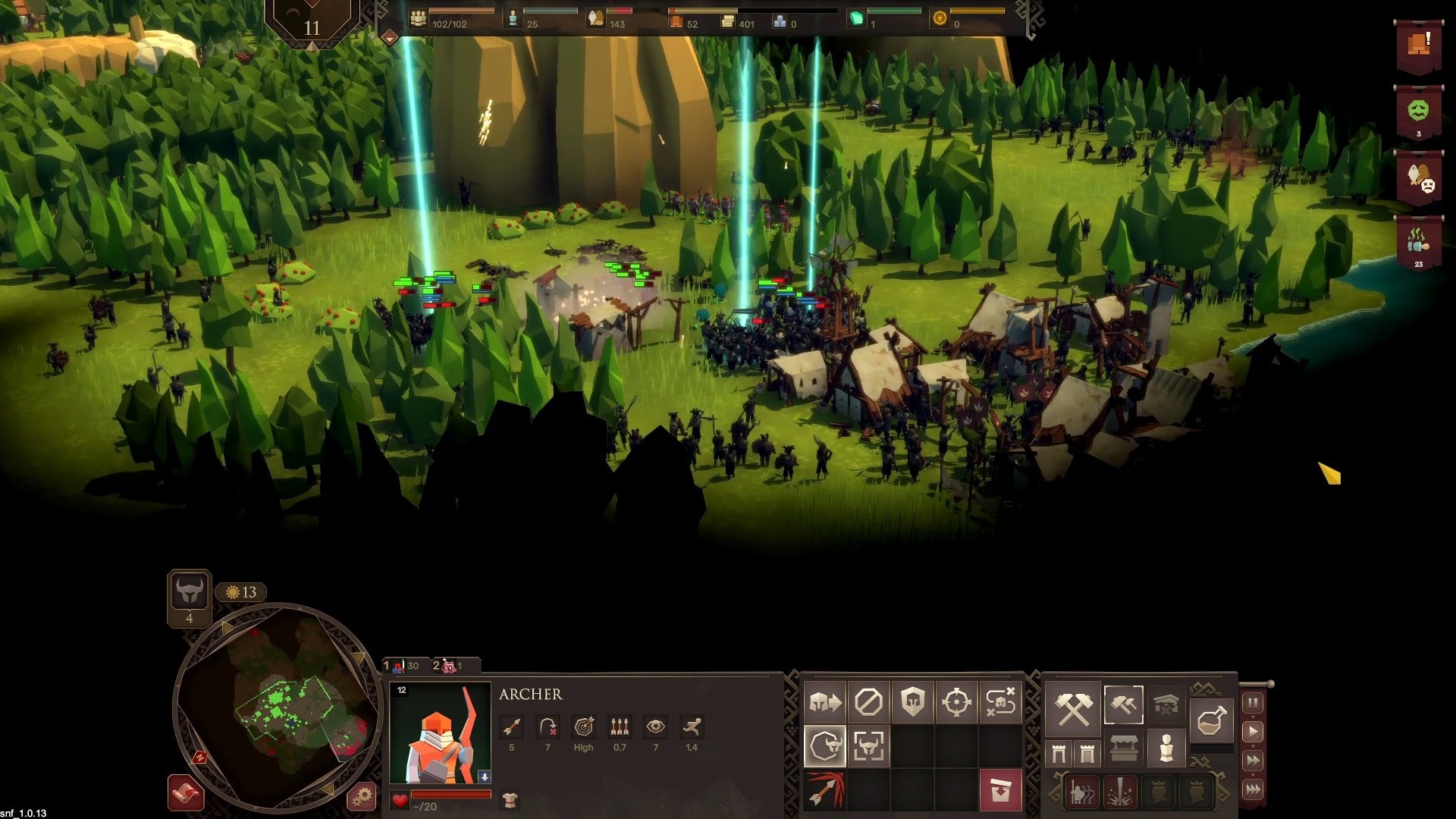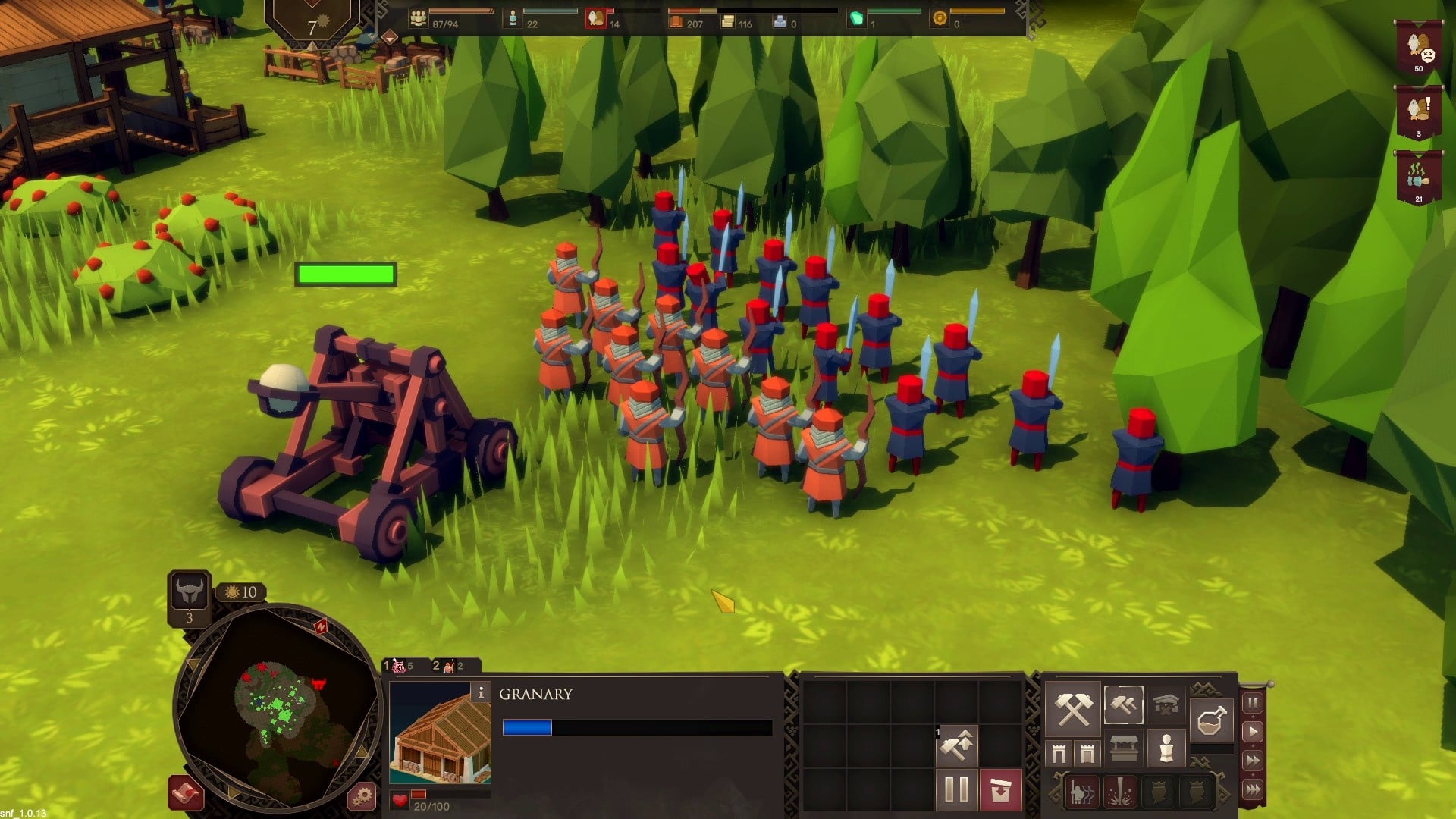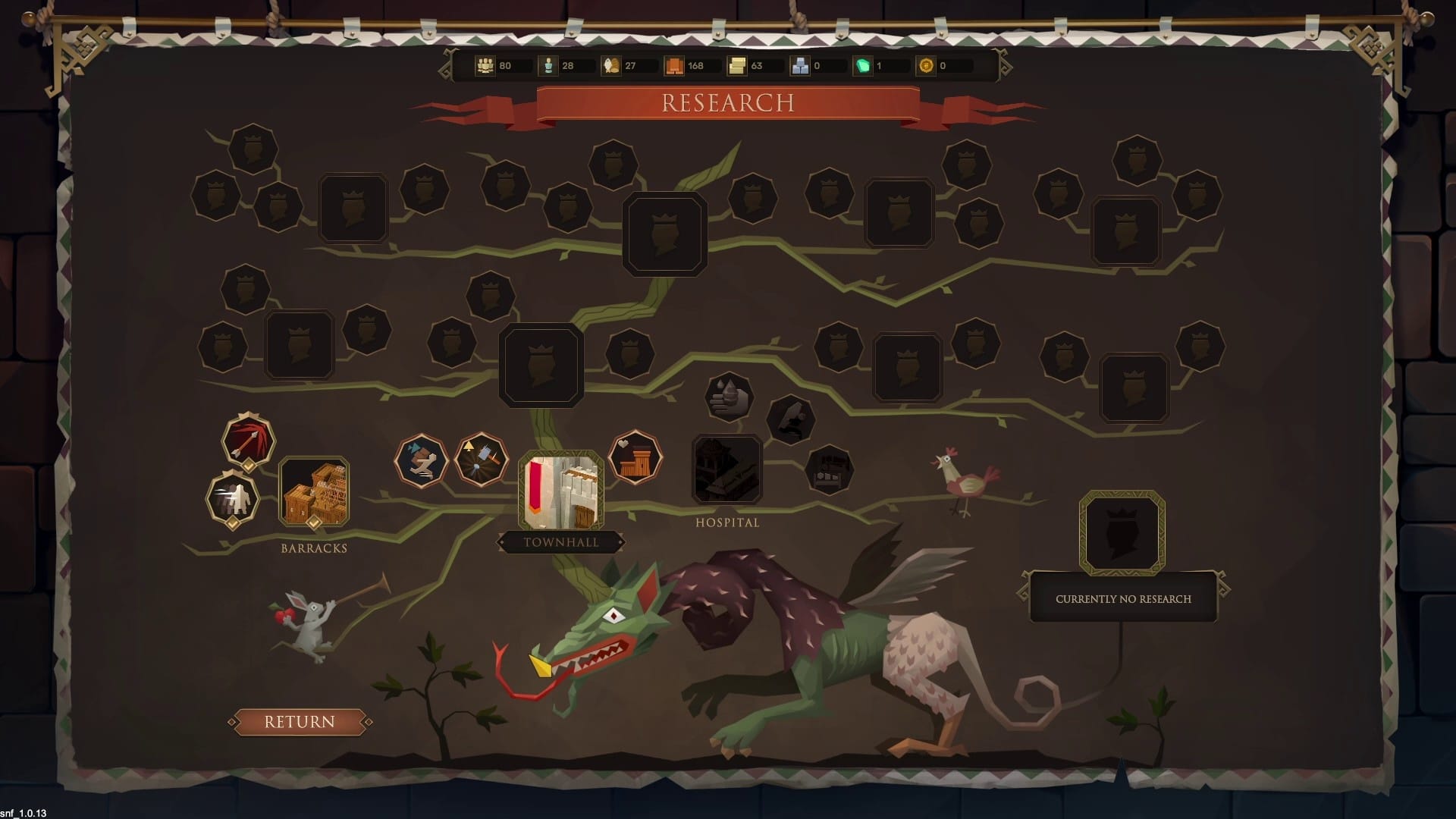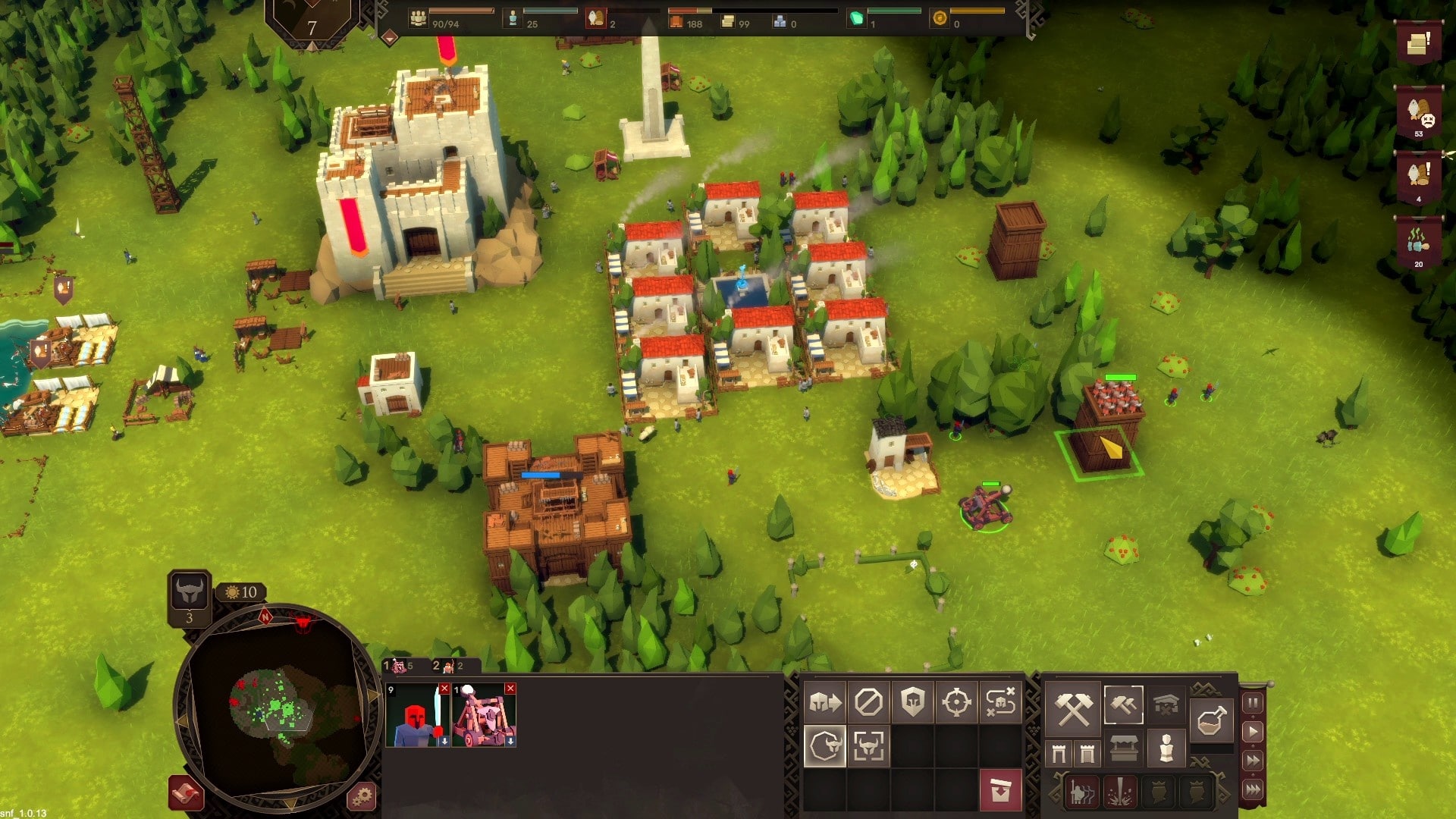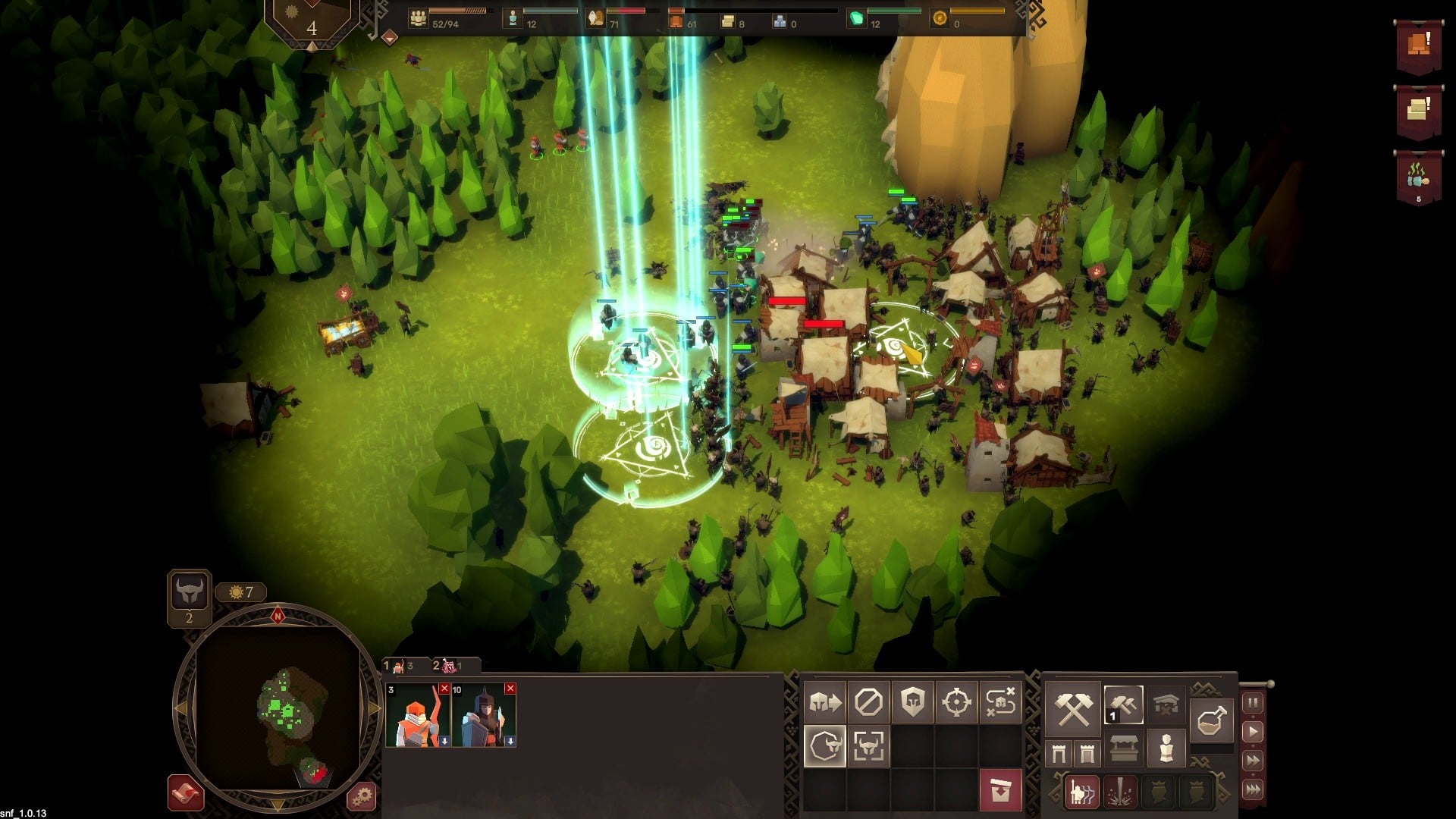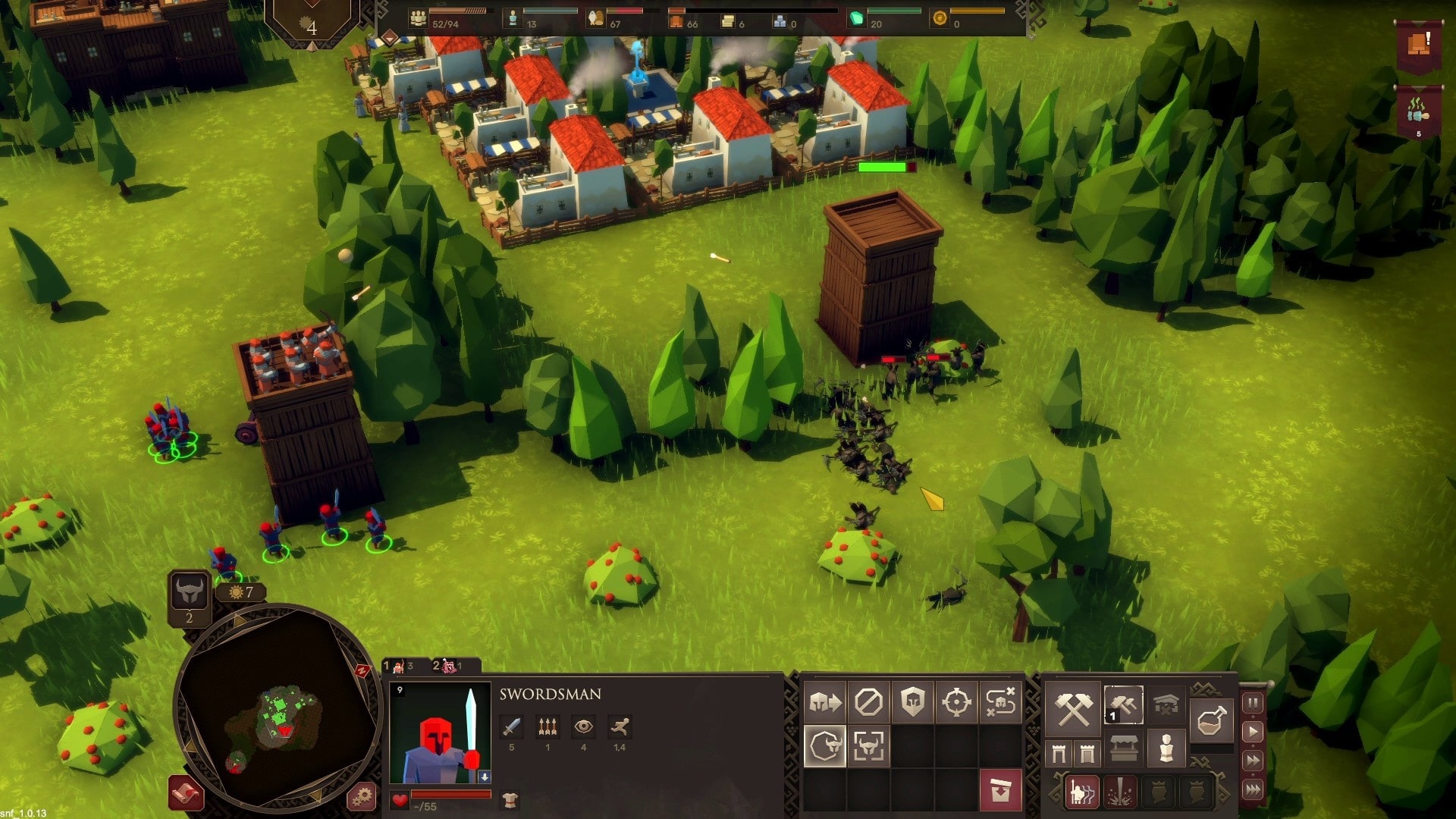In the new medieval game, real-time strategy and survival meet unyielding enemies. Incredibly countless, unyielding enemies.
Medieval times? Thriving cities including castle building? Merciless enemies crashing on our walls en masse? “Greetings, Sire?”
If you think back to the glorious days of Stronghold when you hear these words, Diplomacy is Not an Option will quickly make your heart swell. Even the menu makes the wildest strategy dreams come true. There is a promising campaign, time-consuming endless game scenarios, the obligatory tutorial. Even the game options make me smile happily.
Under the “Diplomacy” tab, I am given the choice between: “No”, “Off” and “Is not an option”. Hah! Nice gag, dear developers, as a true strategy expert I want to enter the fray full of energy anyway!
Several desperate hours, including many unsuccessful restarts later, I might, just might, wish for something like a diplomacy function.
Because Diplomacy is Not an Option is hard as hell.
Table of Contents
Deceptive Idyll
At the same time, each game starts so tranquilly and innocently. In the cute polygon look, citizens walk busily between the buildings, chickens chase around at the granary and at the edge of the forest, deer and roe deer disappear into the bright green.
Court life flourishes and thrives in the splendour and wealth of the crown. At least until recently. Of all things, there is a shortage of gold at the moment, because the rabble recently wants to live tax-free and refuses to finance the nobility’s noble booze-up or the latest fashionable carpet. Brazen!
The rebellion of the subjects is also the starting point of the campaign. This is currently anything but huge, but only includes two missions during the game’s Early Access phase.
However, the Russian developer Door 407 promises a lot more for the full release. The mission map on which we plan our next steps already shows many regions and even continents that are currently inaccessible.
The current lack of content is not so bad anyway, because the second mission has already taken me as much time and nerves as many a complete strategy campaign (up to 20 hours).
Our castle against the world
After bitterly humorous cutscenes, there is a choice of three difficulty levels for each mission. As a veteran of the genre colleague They Are Billions, the middle one appeals to me: “Challenge accepted”. The goal is to defend your own fortress against the ever-increasing waves of rebel attacks.
In proper tower defence style, we raise several towers and walls, which we equip with numerous soldiers and catapults. Fantastic elements also find their way into the game and we can hurl lightning bolts and meteors at masses of enemies. A feast!
At the same time, we need a functioning and growing infrastructure to increase our army. For this we need to act expansively and spread out, as resources such as wood and stone are finite.
A growing empire also means broader fronts. A weakness that our opponent mercilessly exploits. From a certain point on, the rebels send troops from all directions without a break.
If you don’t deal with the rebels in time, you won’t have a breather until the next, sometimes gigantic, wave of enemies. Fast action and a lot of multitasking are therefore required in order to remain master of the situation at all times. The weak, sometimes suicidal wayfinding of one’s own troops often throws a spanner in the works, which leads to some moments of frustration.
Only by restarting the game several times, adjusting my troop deployment and optimising my building sequence was I finally able to happily collect taxes from my purified population.
Hardcore strategists will have a great time with Diplomacy is Not an Option. By the way: The easiest difficulty level “A walk through the park” is definitely not a relaxing time-out, but already offers challenging sieges and thus resembles “normal” rather than “easy”.
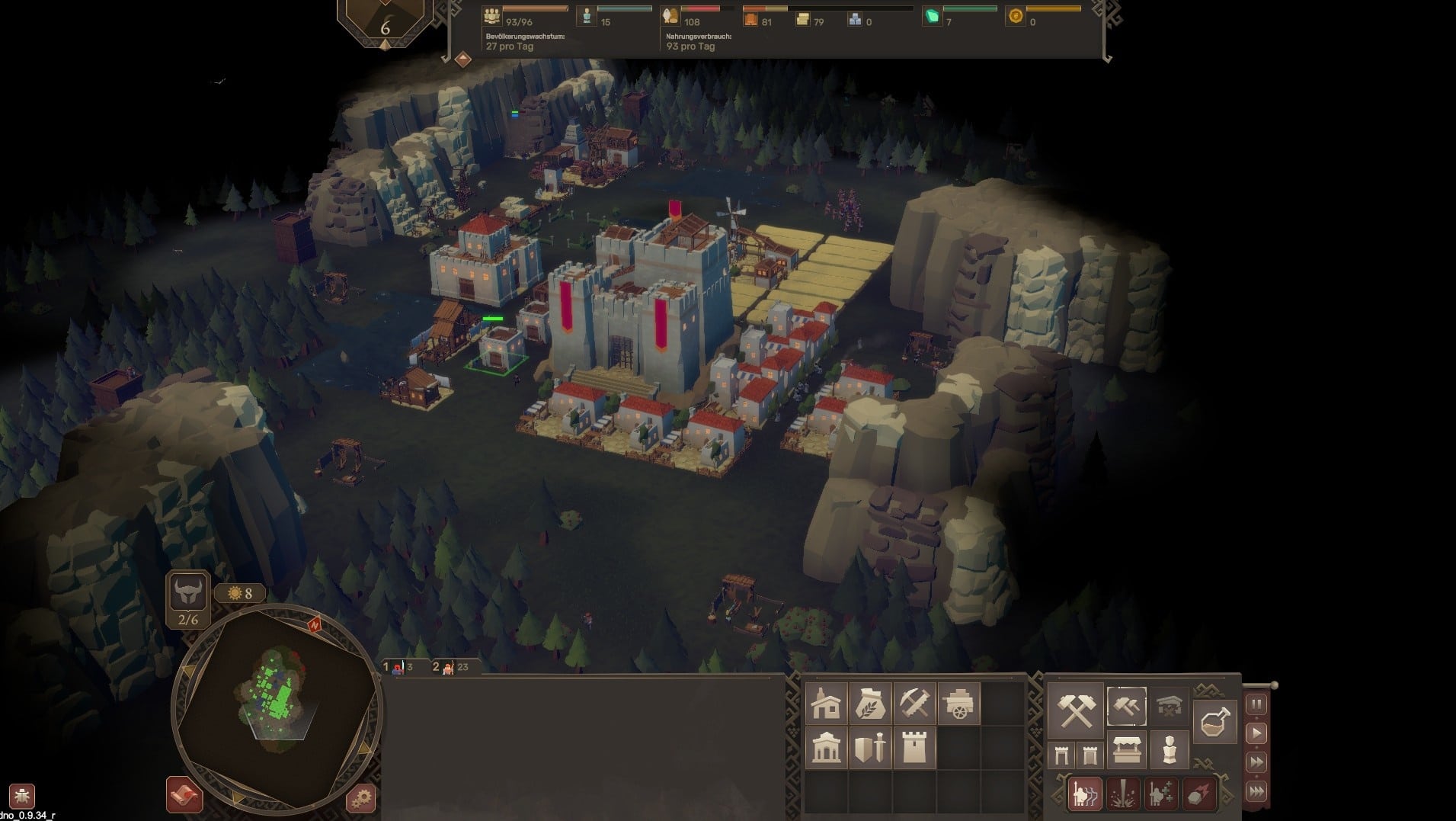
Fight for survival
The core and showpiece of Diplomacy is Not an Option are the incredibly huge, beautifully staged battles. The sheer mass of enemies thrown at you regularly amazes you and quickly makes you forget that your own fortress is being reduced to rubble and piles of corpses are piling up.
Both, but especially the latter, should be avoided at all costs, because the fallen must be buried in a cemetery. Those who put this off risk a plague and thus seal the slow, painful demise of the population.
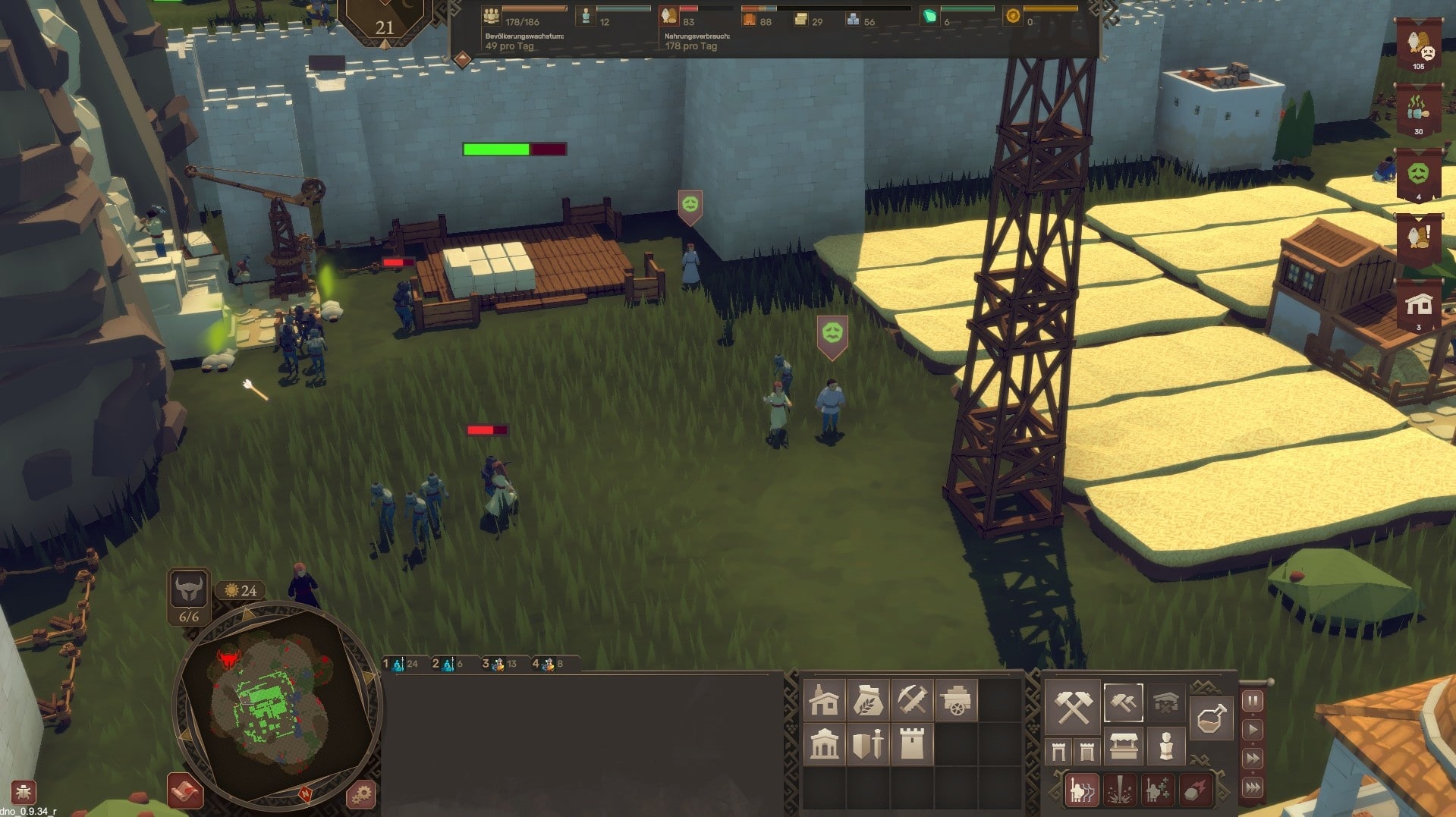
Also, as an exemplary lord, we have to make sure that our deluded, loyal subjects always get enough food on their plates. Typical survival elements that make the game even crunchier. After all, numerous convenient micromanagment features help us keep track of our settlement. So we always see exactly which quarry has run dry, where another corpse is lurking on the street and where the plague is going around.
Speaking of food supply: Anyone hoping for the depth of a city-building or economic simulator from the game will be disappointed. Instead of a production chain, for example, our farms produce wheat, flour and the final bread simply as a kind of all-inclusive building.
The procurement of resources always takes place directly without detours, in the style of a real-time strategy game that focuses on combat. There are technology levels for more powerful buildings and weapons and also a research tree. However, almost half of the 32 researches are almost useless. Overall, the construction, economy and research seem too simple and half-baked.

More. More and more!
More different units, even bigger castles, even bigger spectacles. These are precisely the points that Door 407 will continue to focus on in its development up to the final release. It is not yet possible to assess whether the campaign will be able to motivate in the long term. Will the entertaining story develop more depth? Can the game principle, which is great in itself, motivate again and again? They are Billions failed precisely on these points.
An exciting approach that already exists is the possibility to switch sides from the second mission onwards and join the rebellion instead of the king. For the horde! From then on we fight for the righteous cause of the mob on the mission map. Apart from the increased challenge level, nothing else has changed in terms of the construction and defence principle. Nor has anything changed in the way we find our way.
The colourful polygon graphics are nice to look at, but in the long run they lack variety. You can expect the same lush green landscapes, the same unit and building models. Here, too, the developers want to improve.
Undoubtedly, Diplomacy is Not an Option already offers an intensive, challenging game experience that will be particularly enjoyable for experienced strategists. Warmest recommendation at the end: The “obligatory tutorial” is worthwhile here.
Diplomacy is Not an Option currently costs around 20 euros and is available on Steam, on GOG.com and in the Epic Games Store.
Editor’s Verdict
Whether in Starcraft, Warcraft or Age of Empires: I love defence missions! Transforming the initially tiny base into a stately fortress to stand against numerous hordes of enemies are the highlights of every campaign for me. And when a game like Diplomacy is Not an Option is inspired by classics like Stronghold, then nothing stands in the way of sales success.
In fact, many things stood in the way of my personal victory in the second mission. Diplomacy is Not an Option turns out to be a fun but extremely tricky real-time strategy game that punishes mistakes mercilessly. My initial naivety gave way to an iron will to master the campaign on the higher difficulty levels. Trial-and-error, a lot of sweat and heart and soul were on the agenda. Anyone looking for a challenge is guaranteed to find it here.
Preliminary rating box
